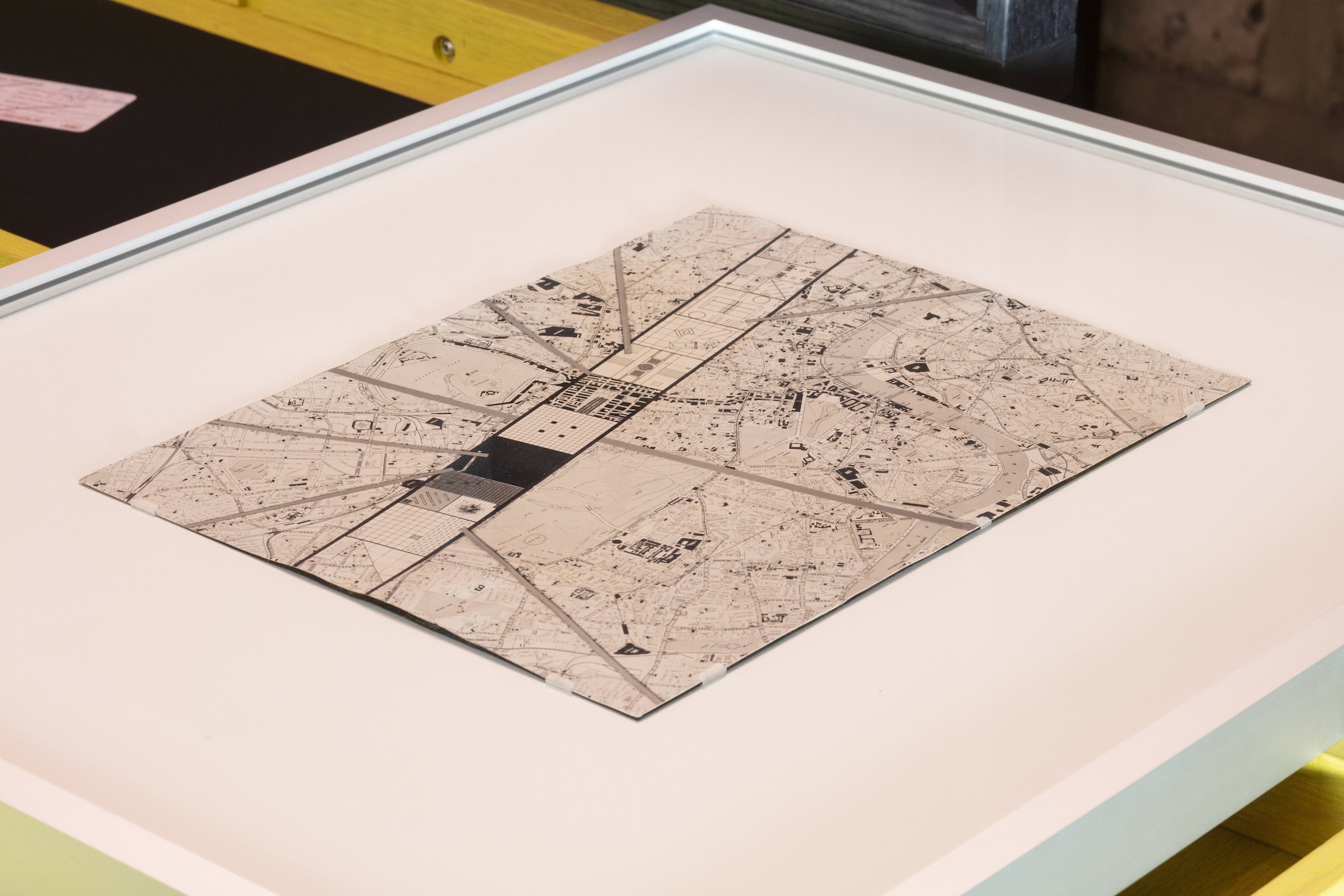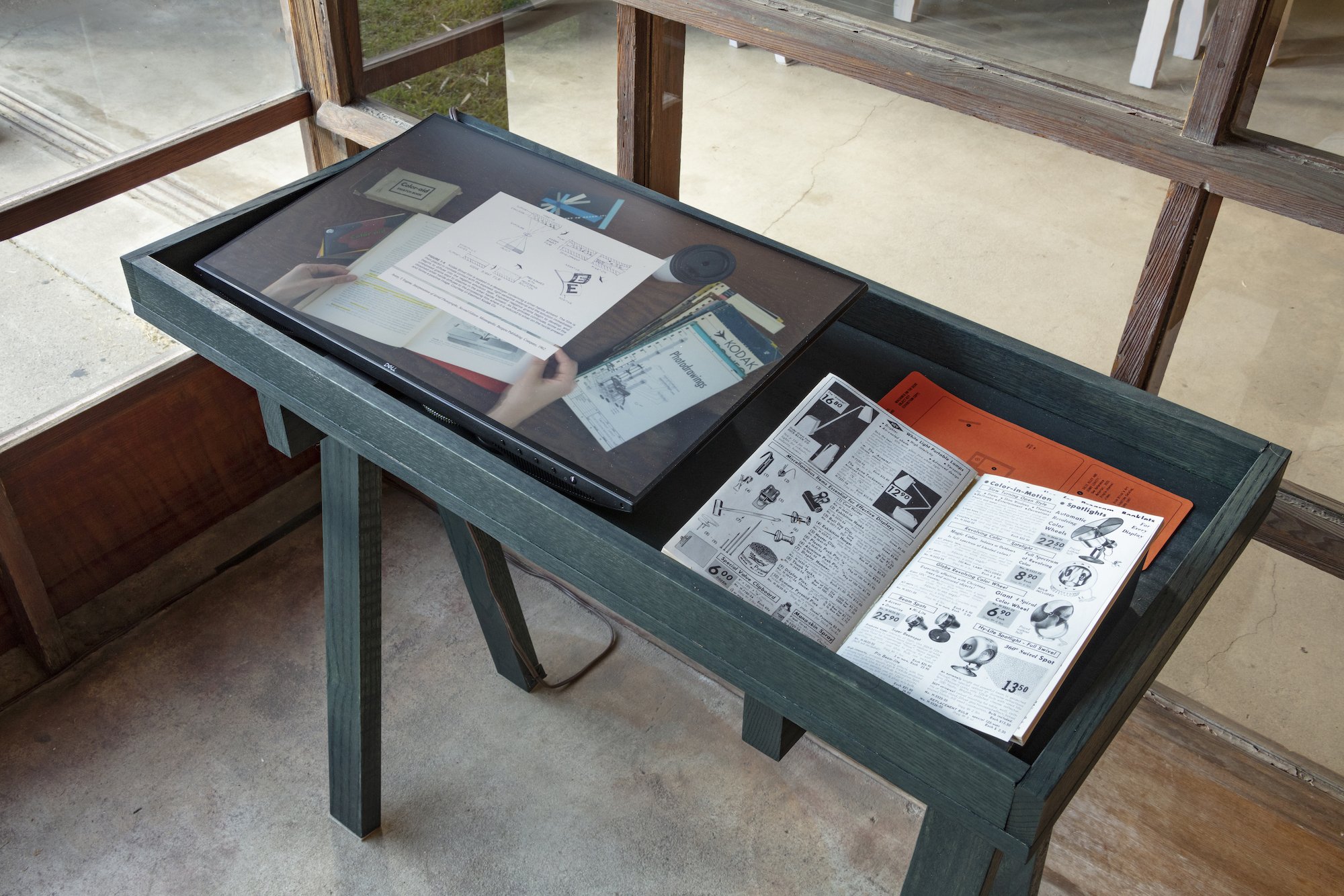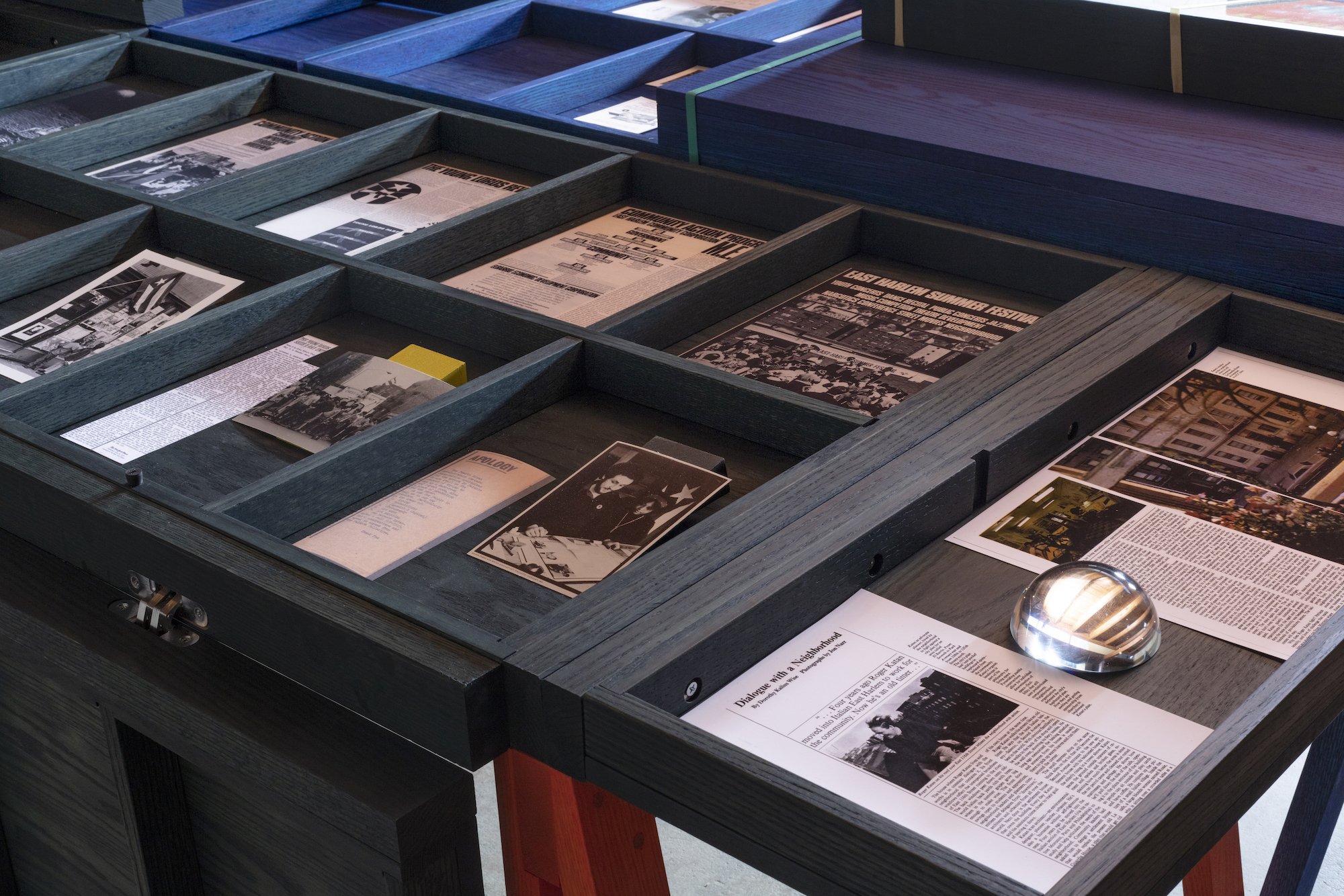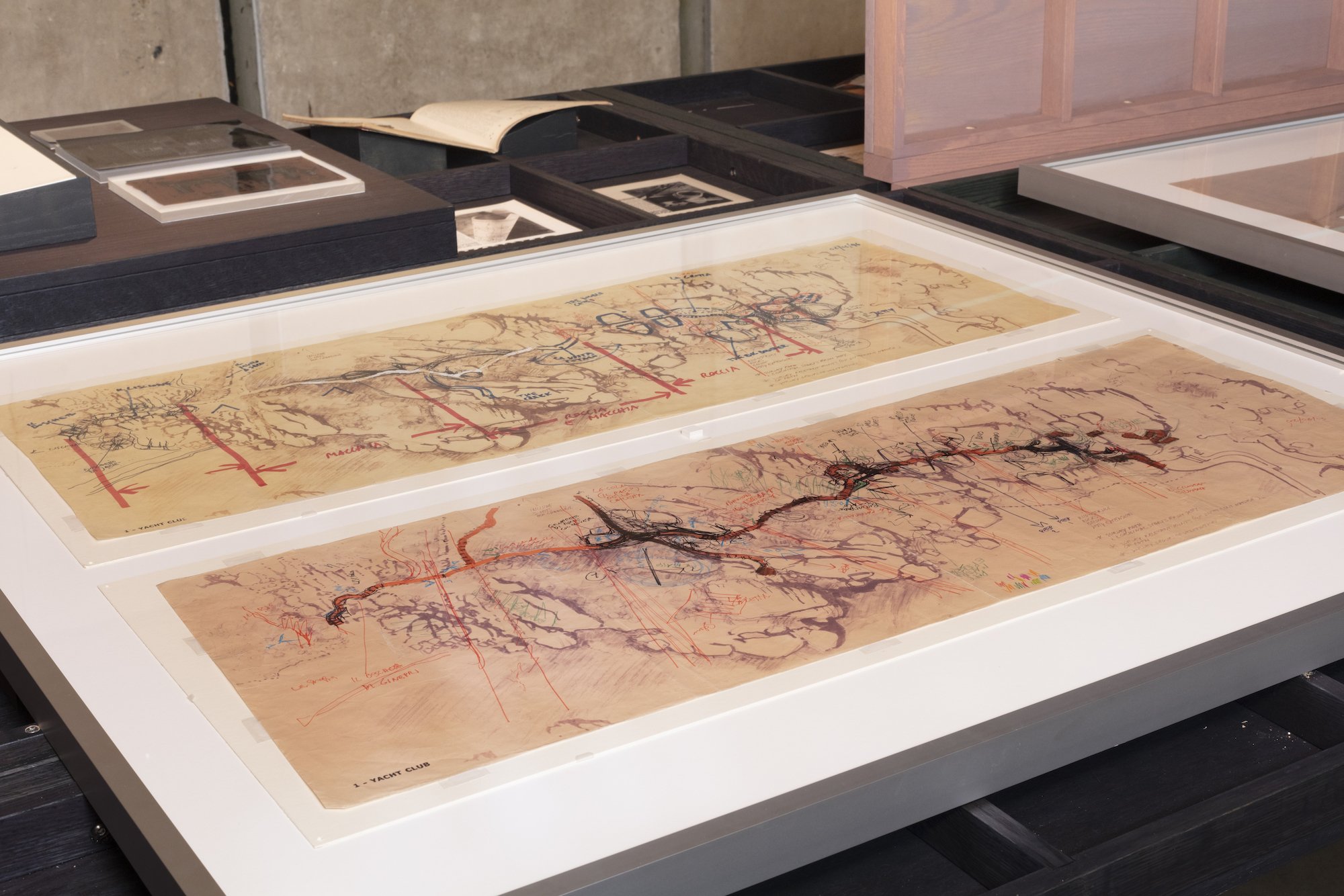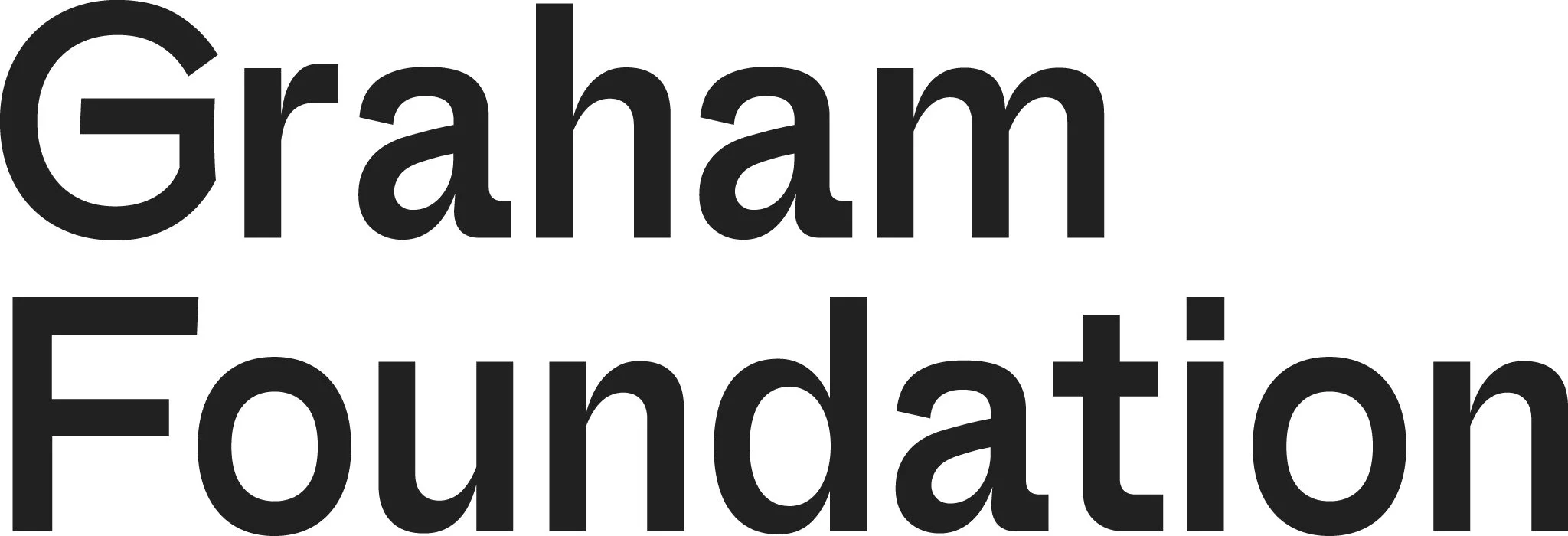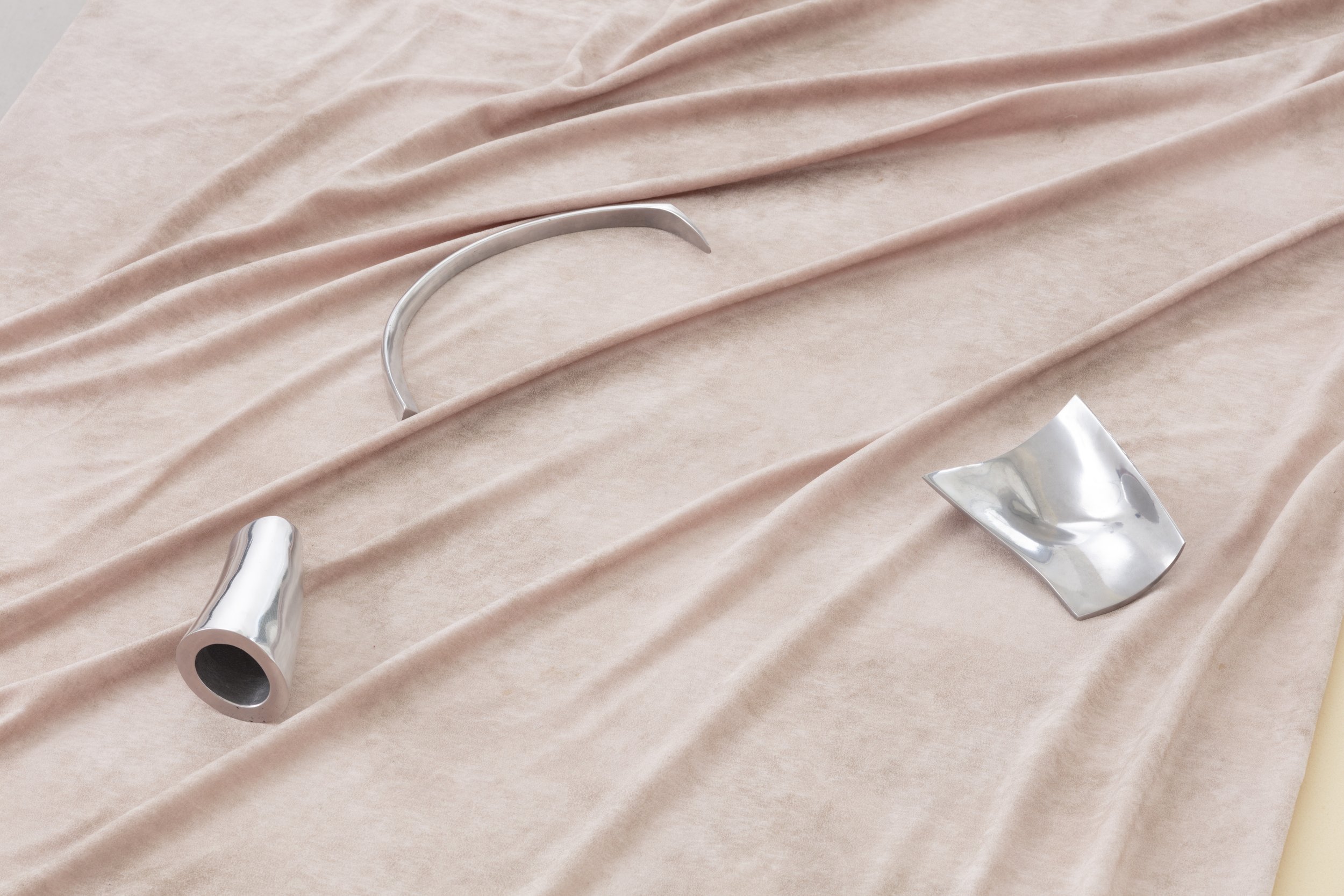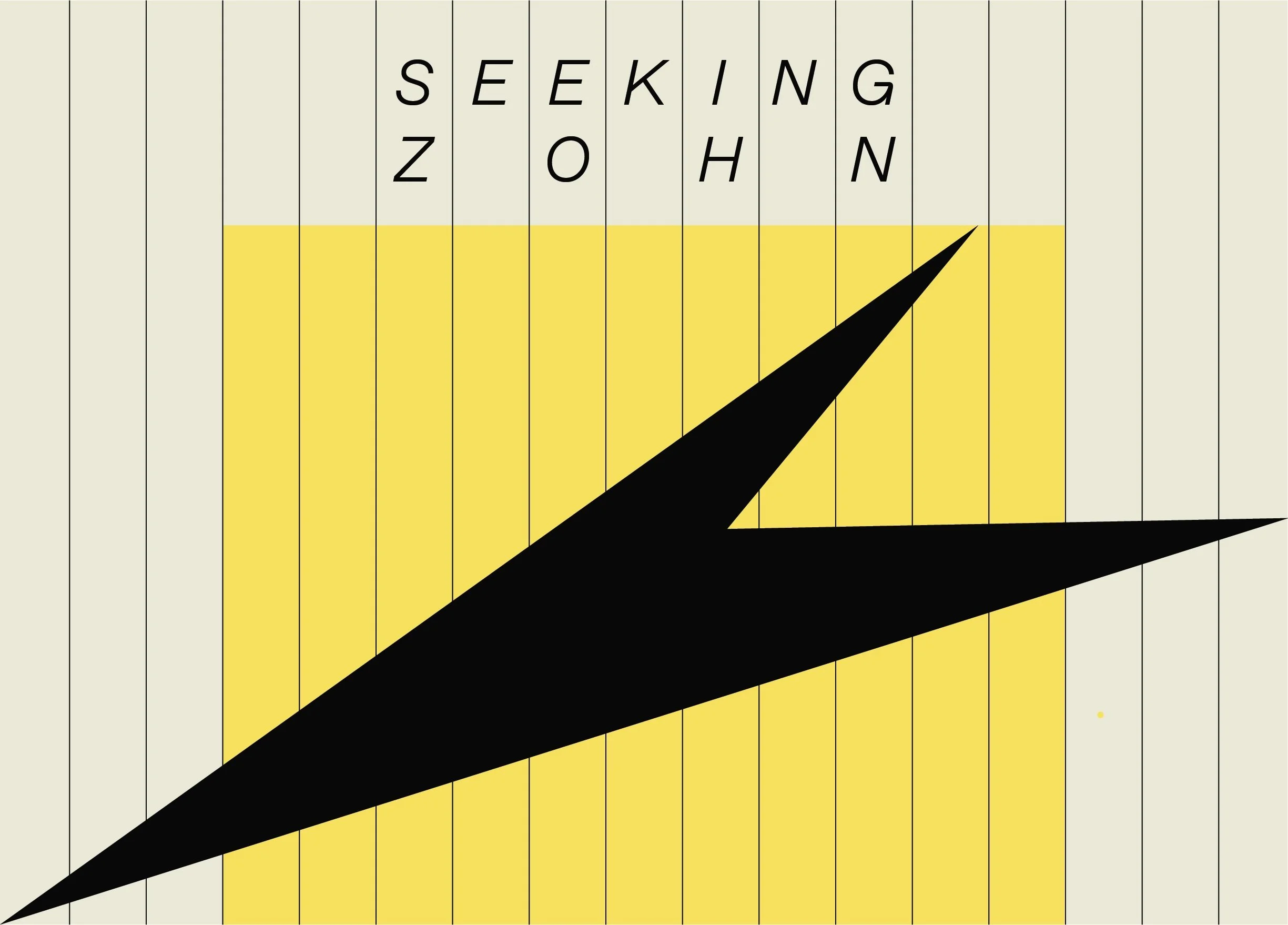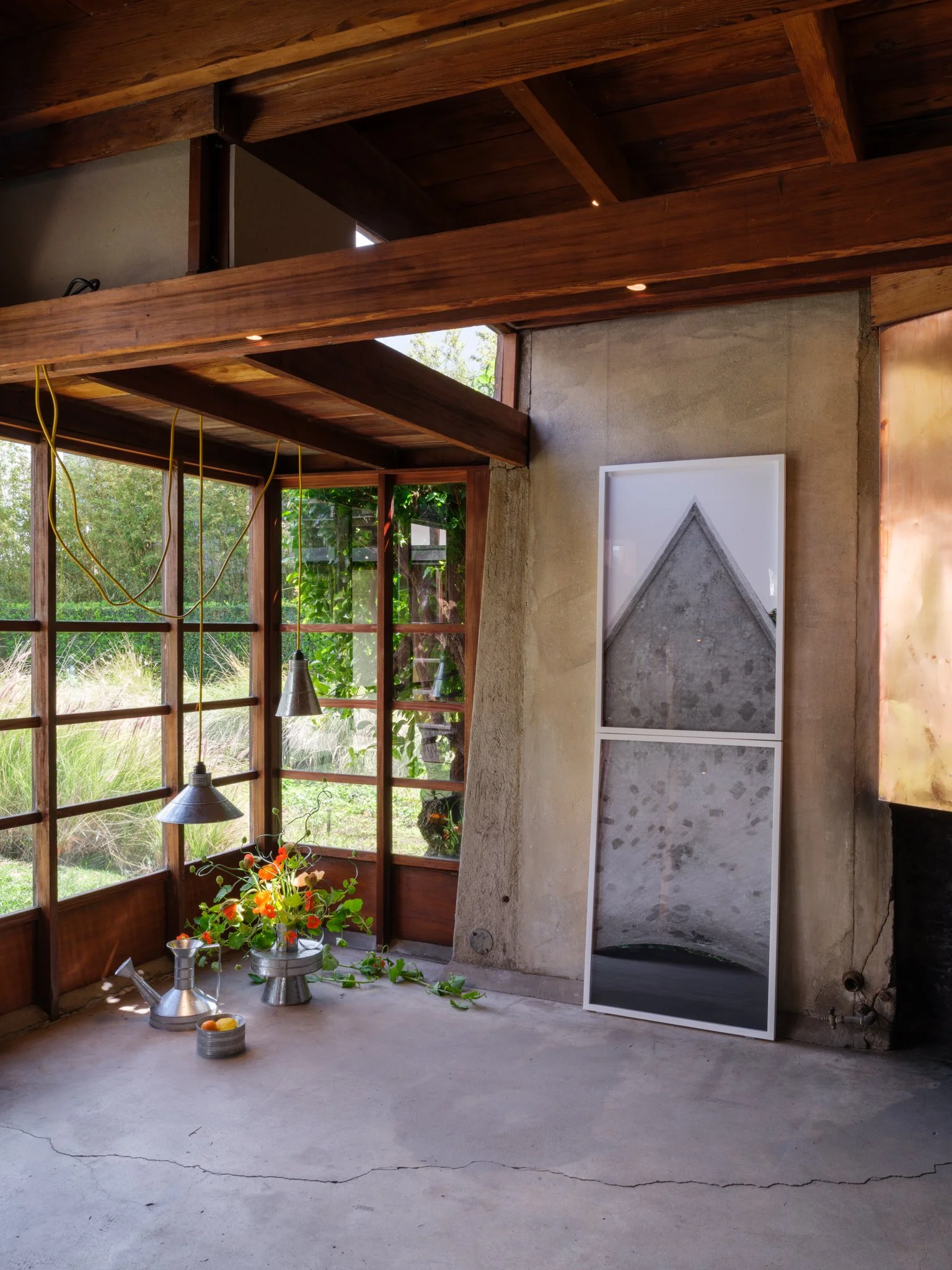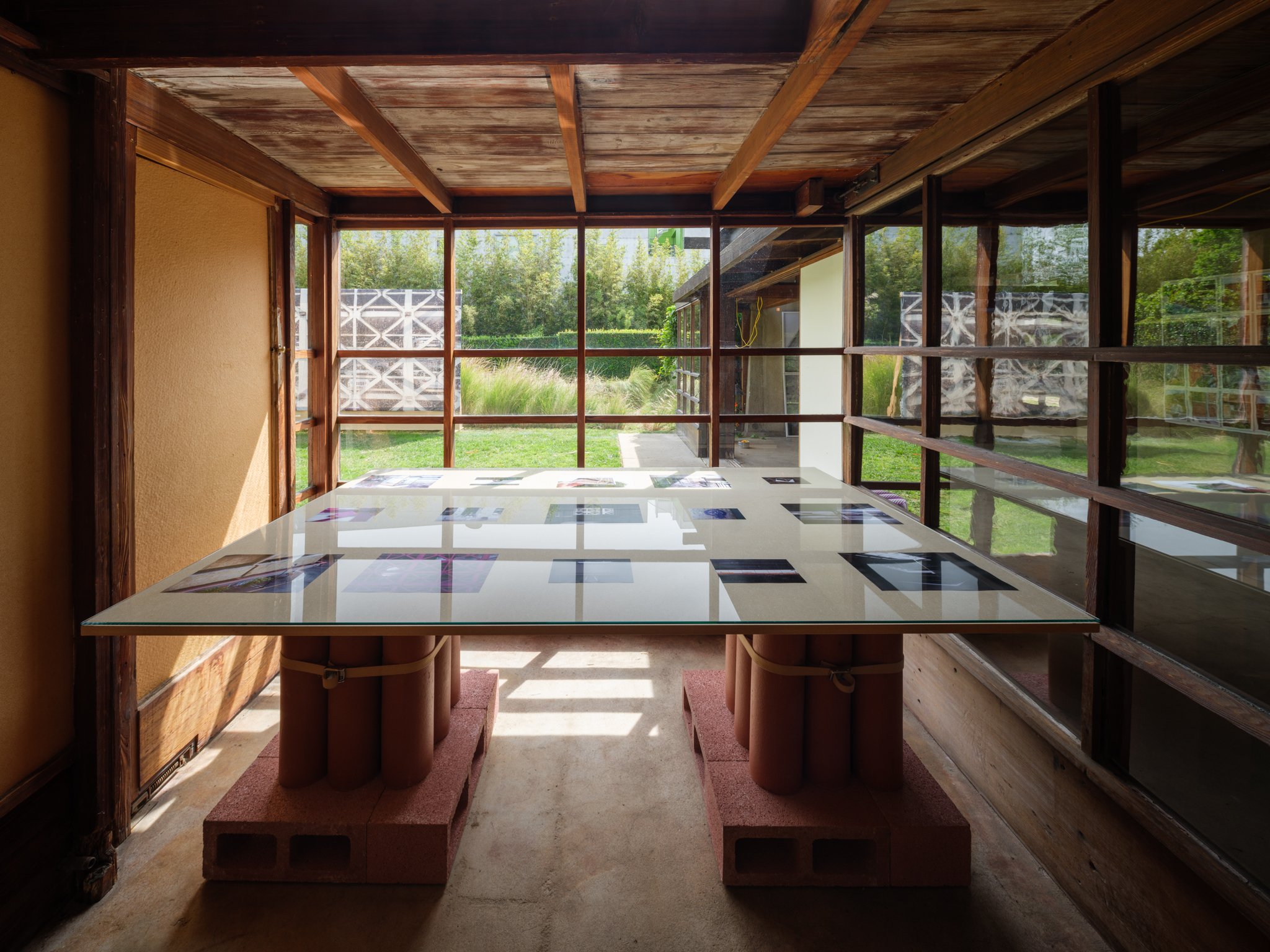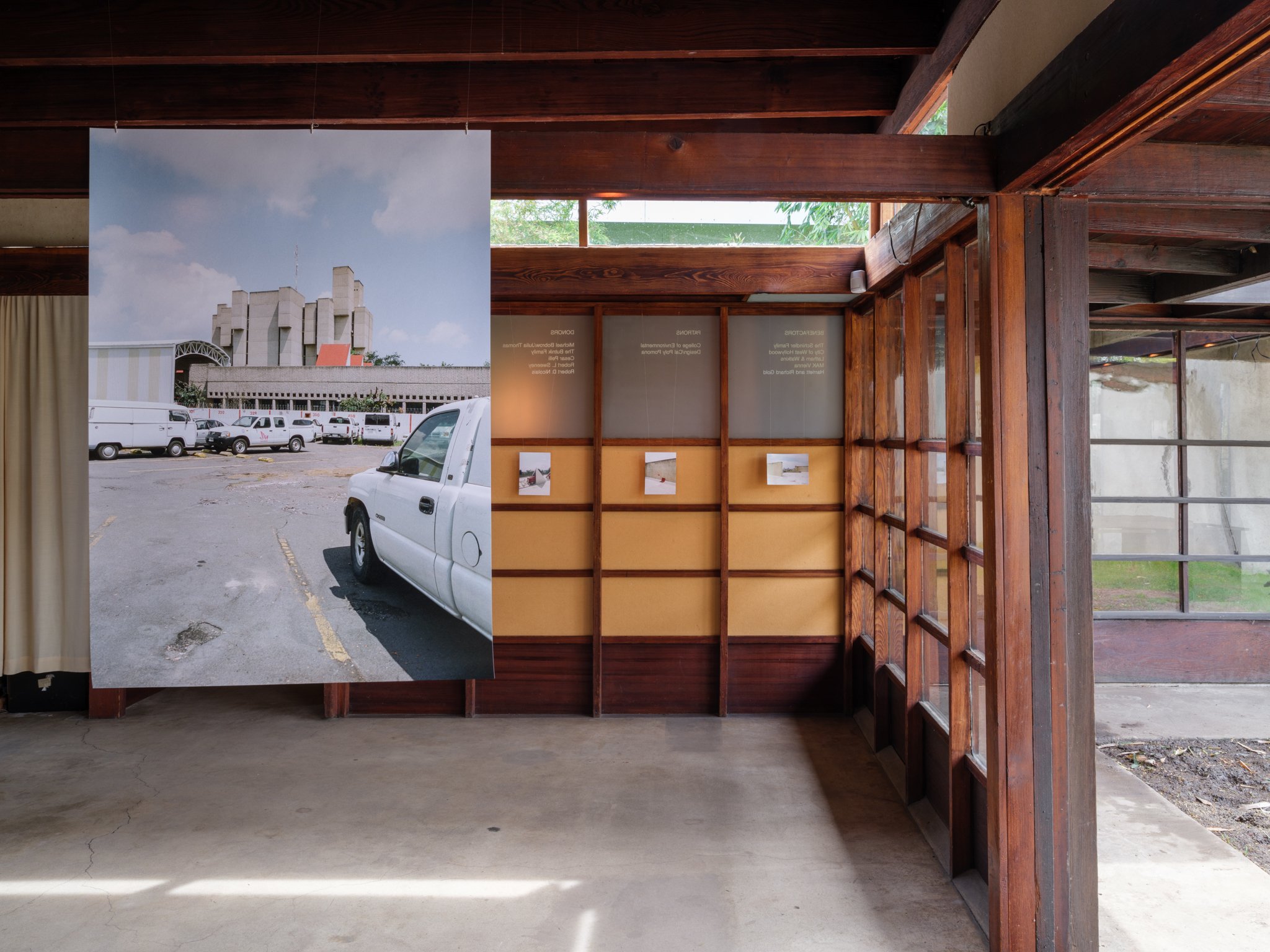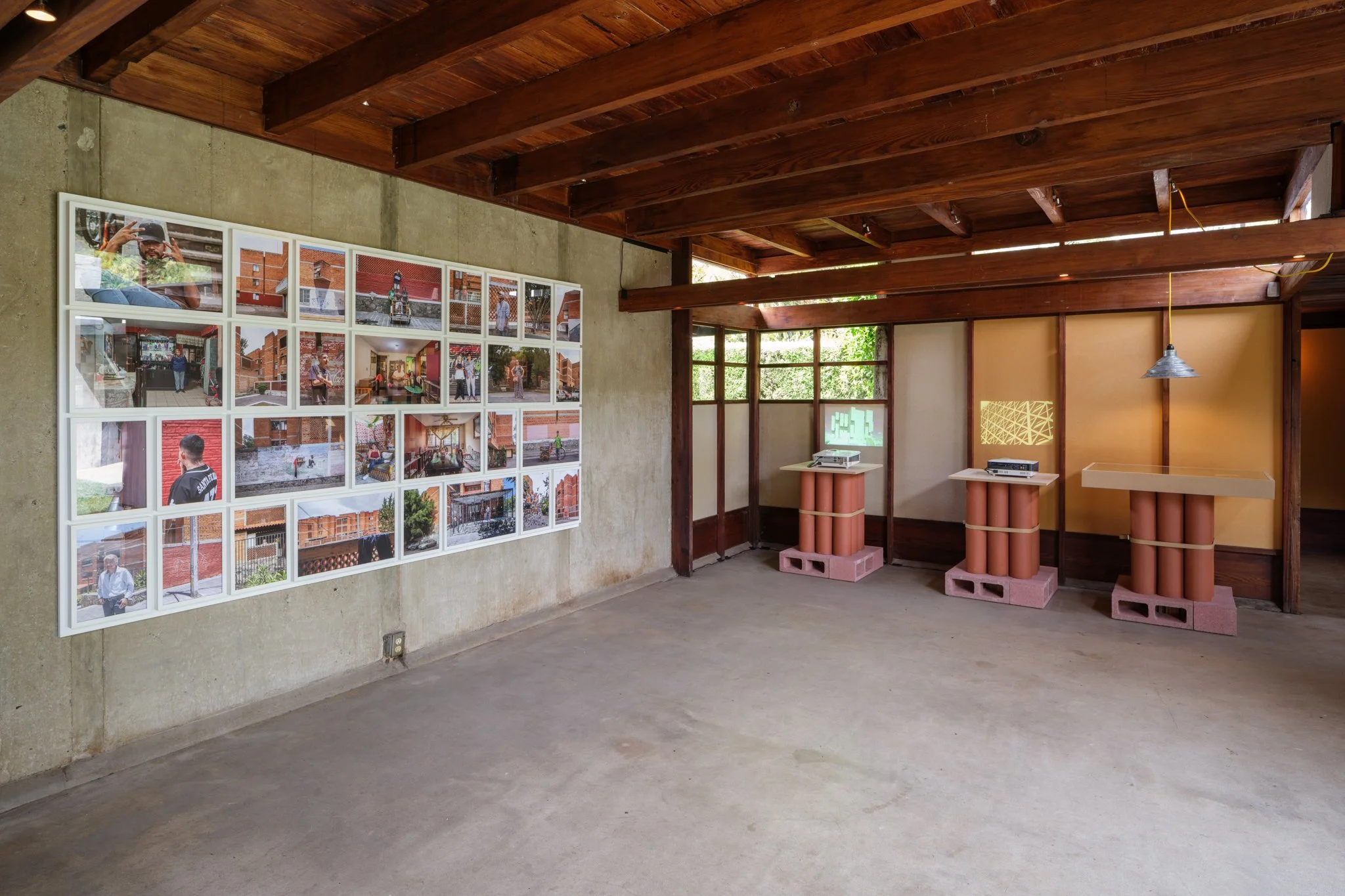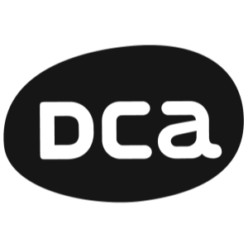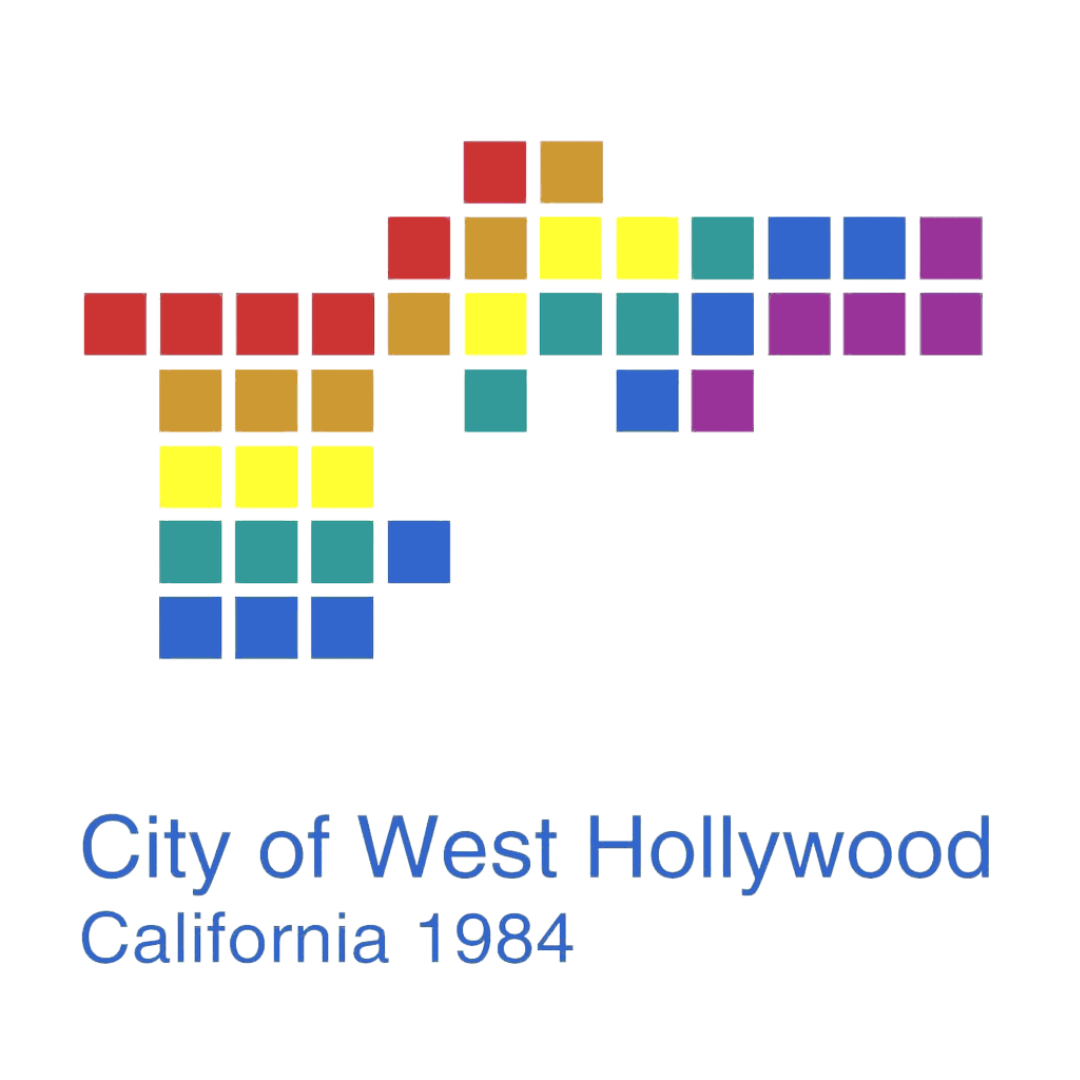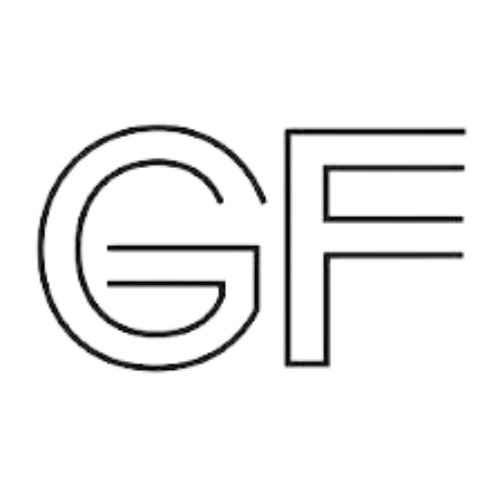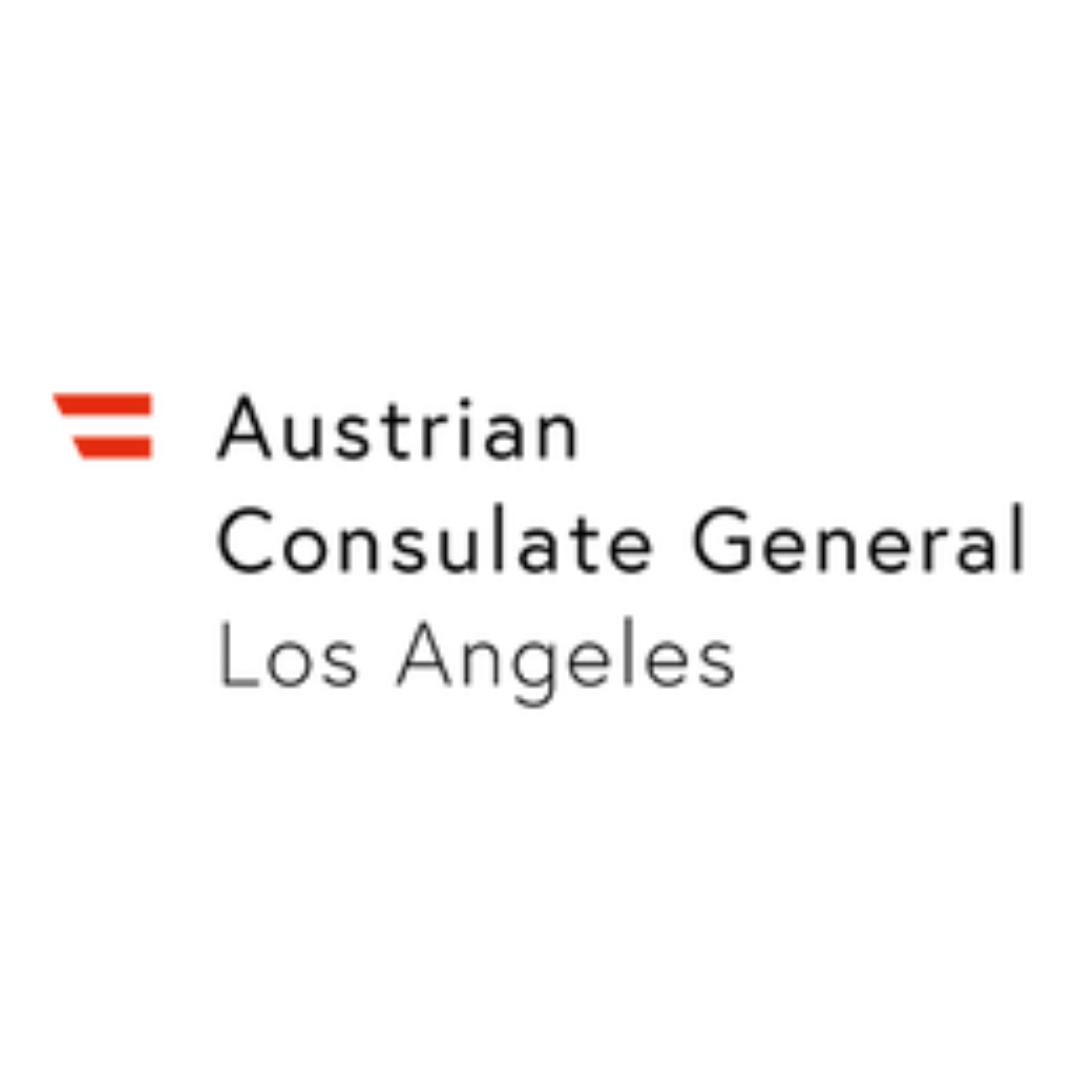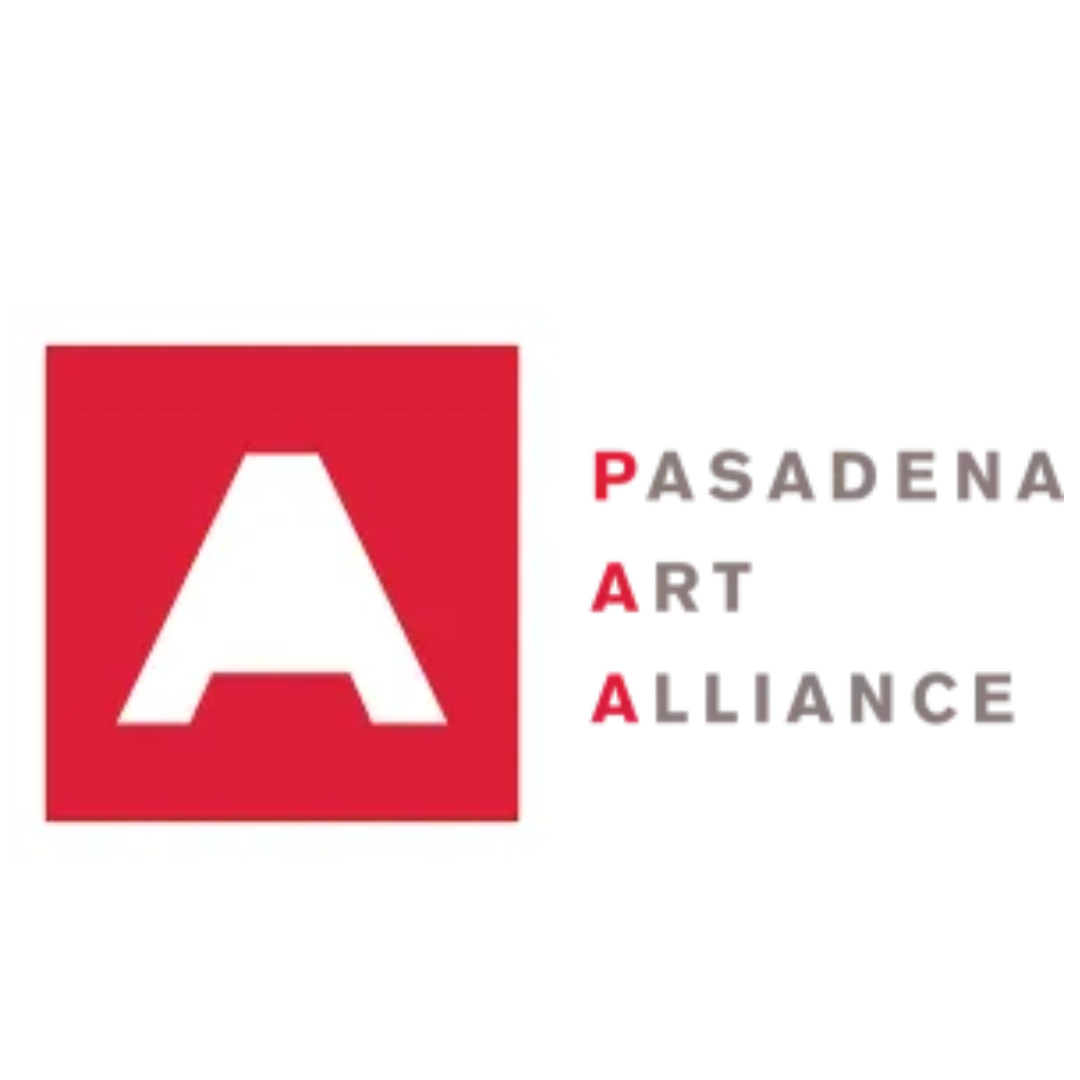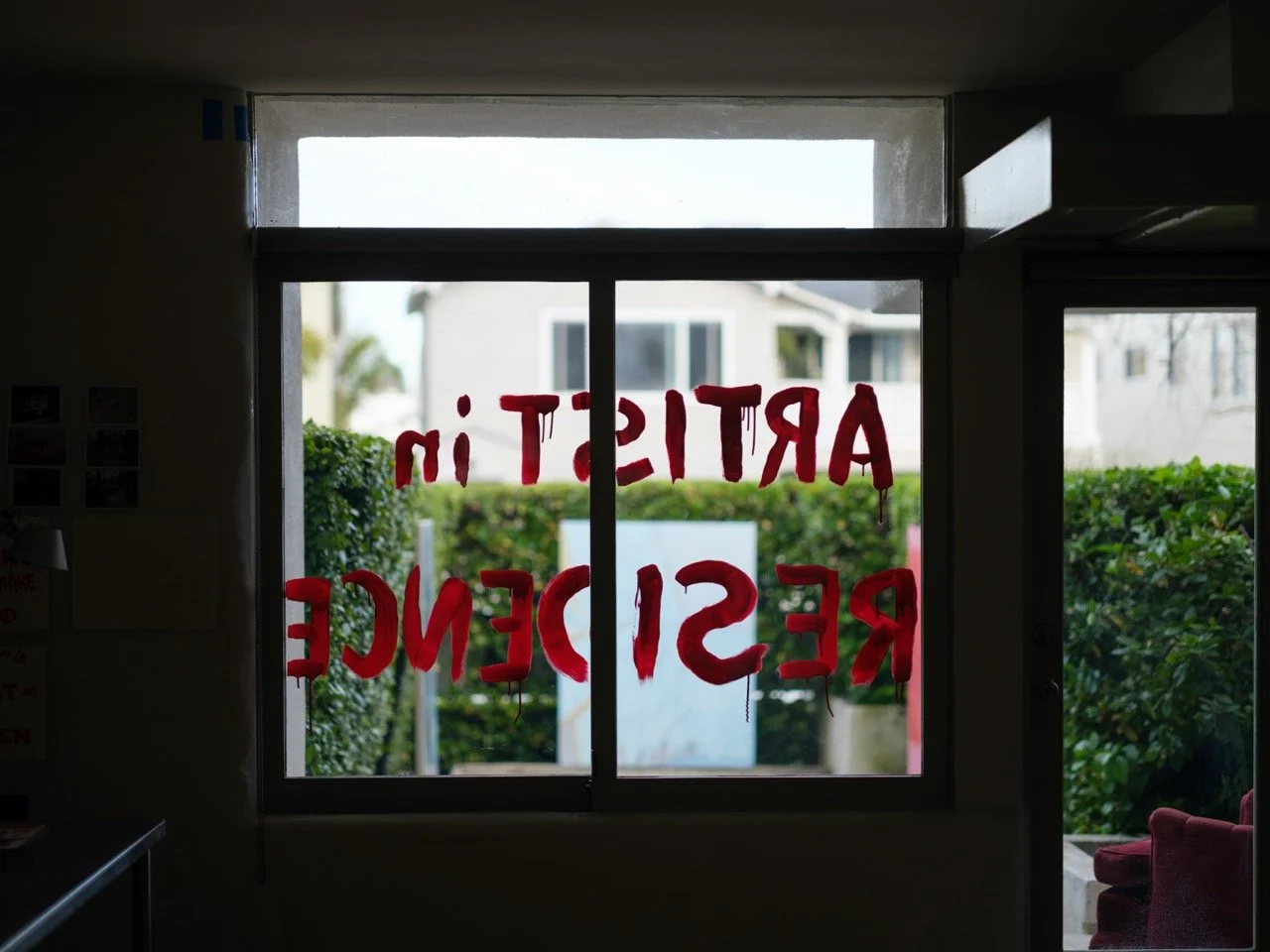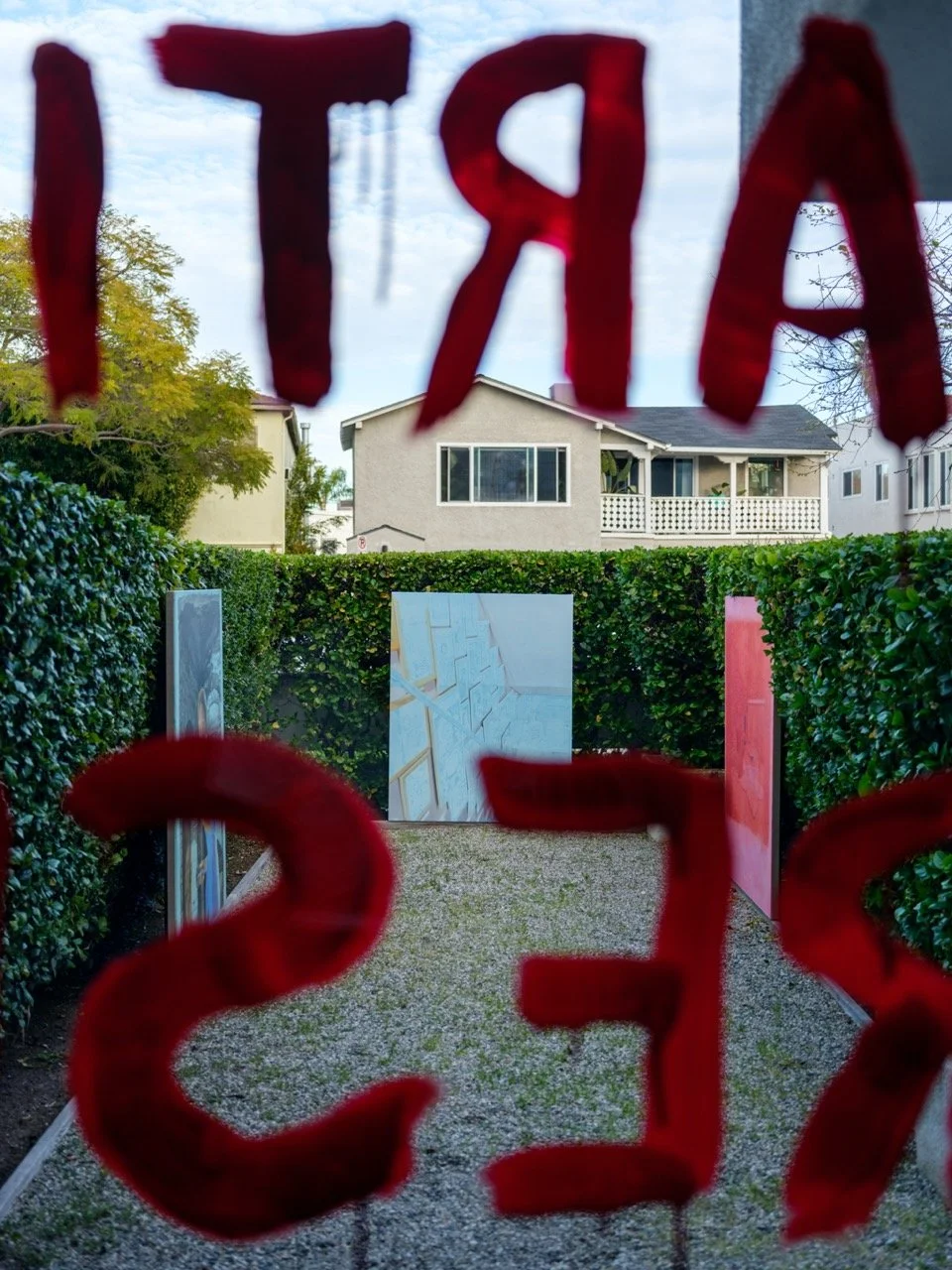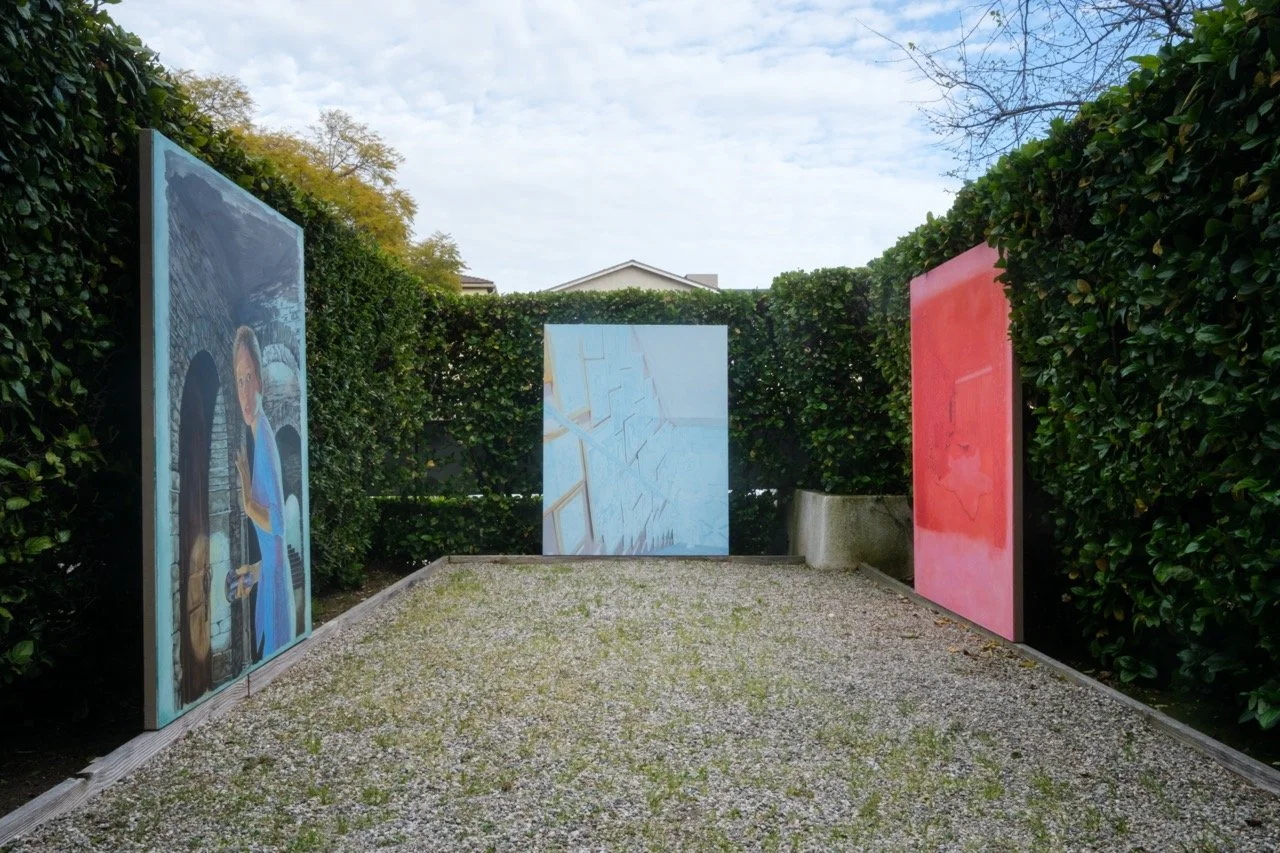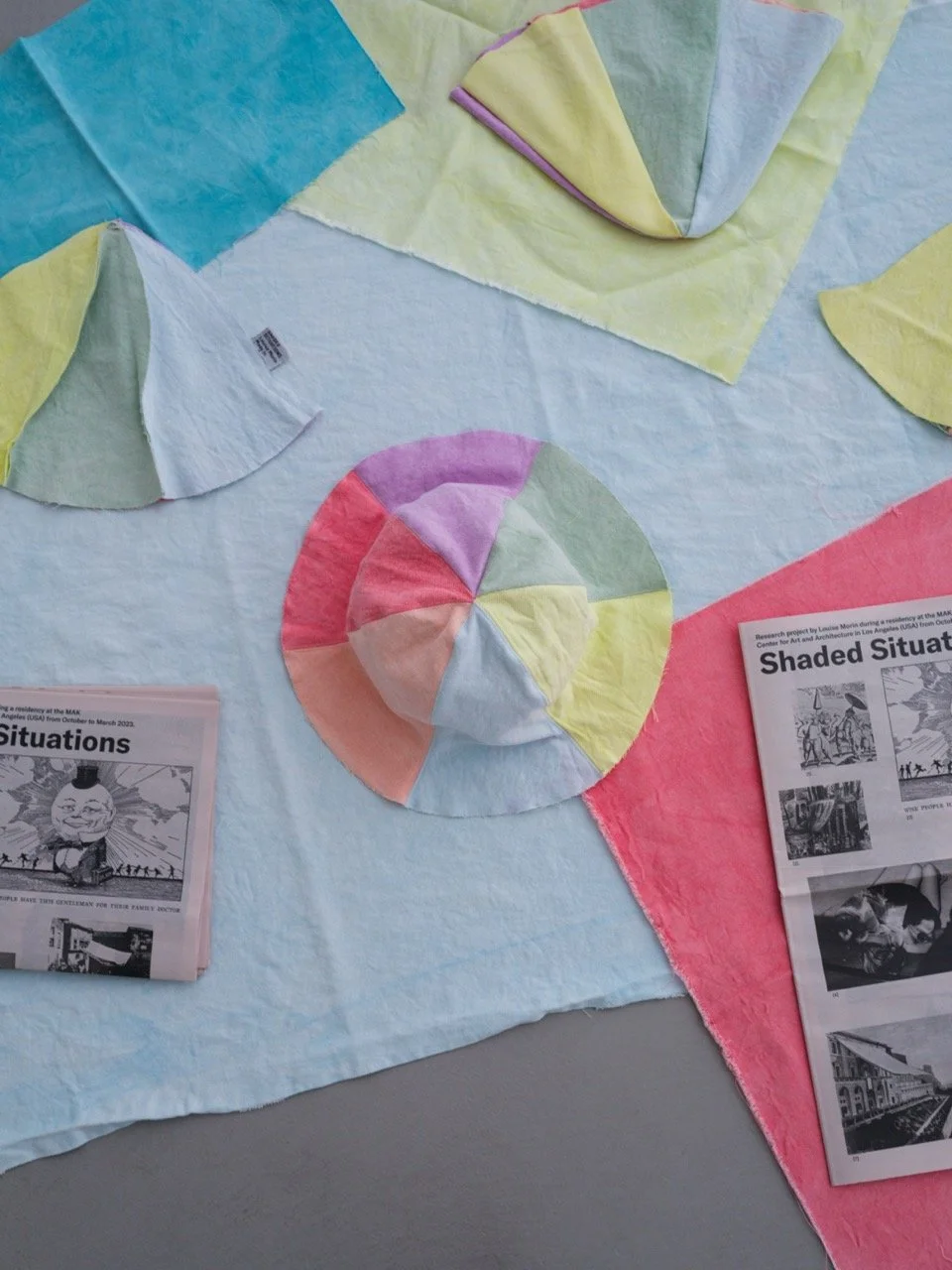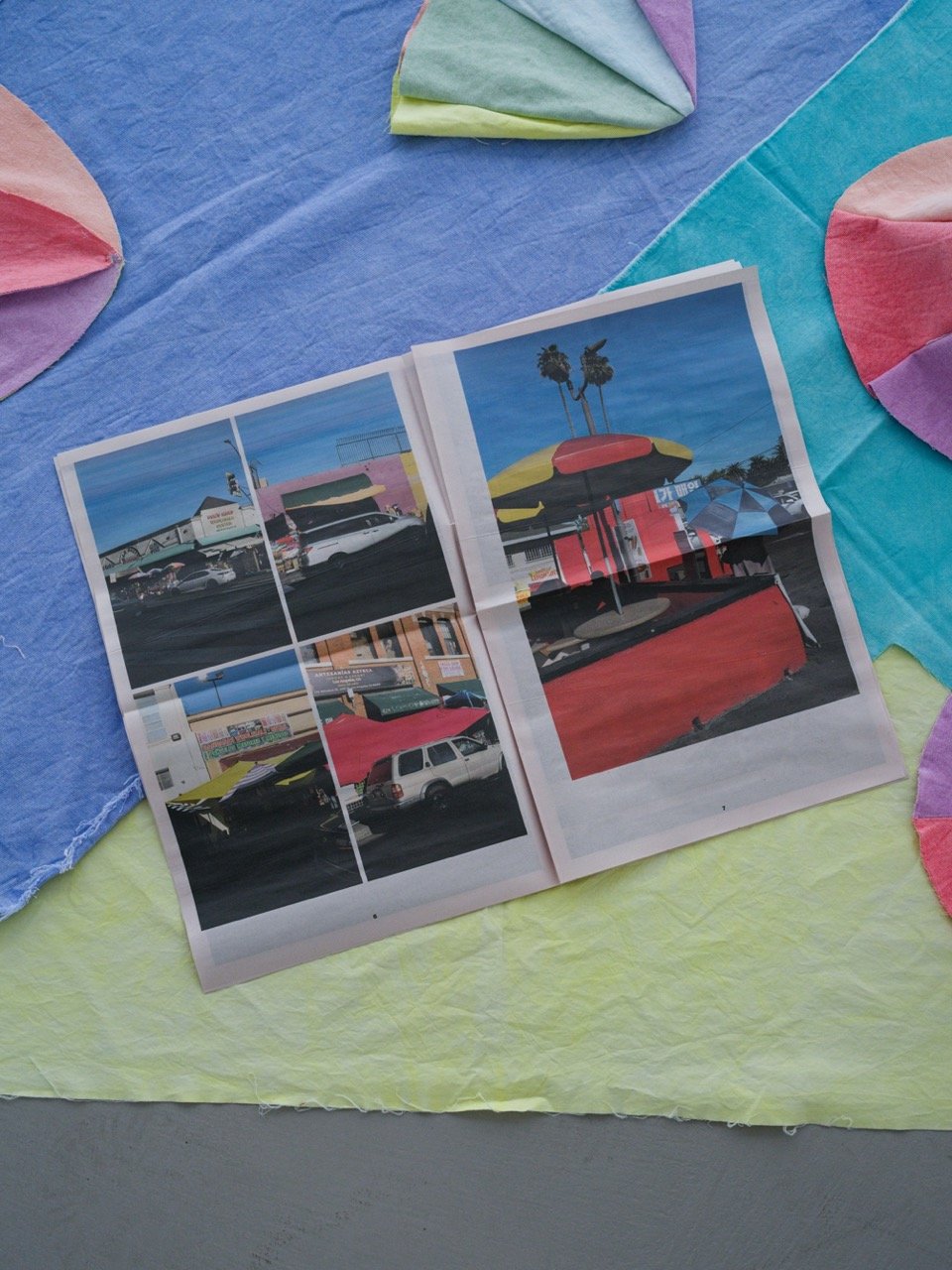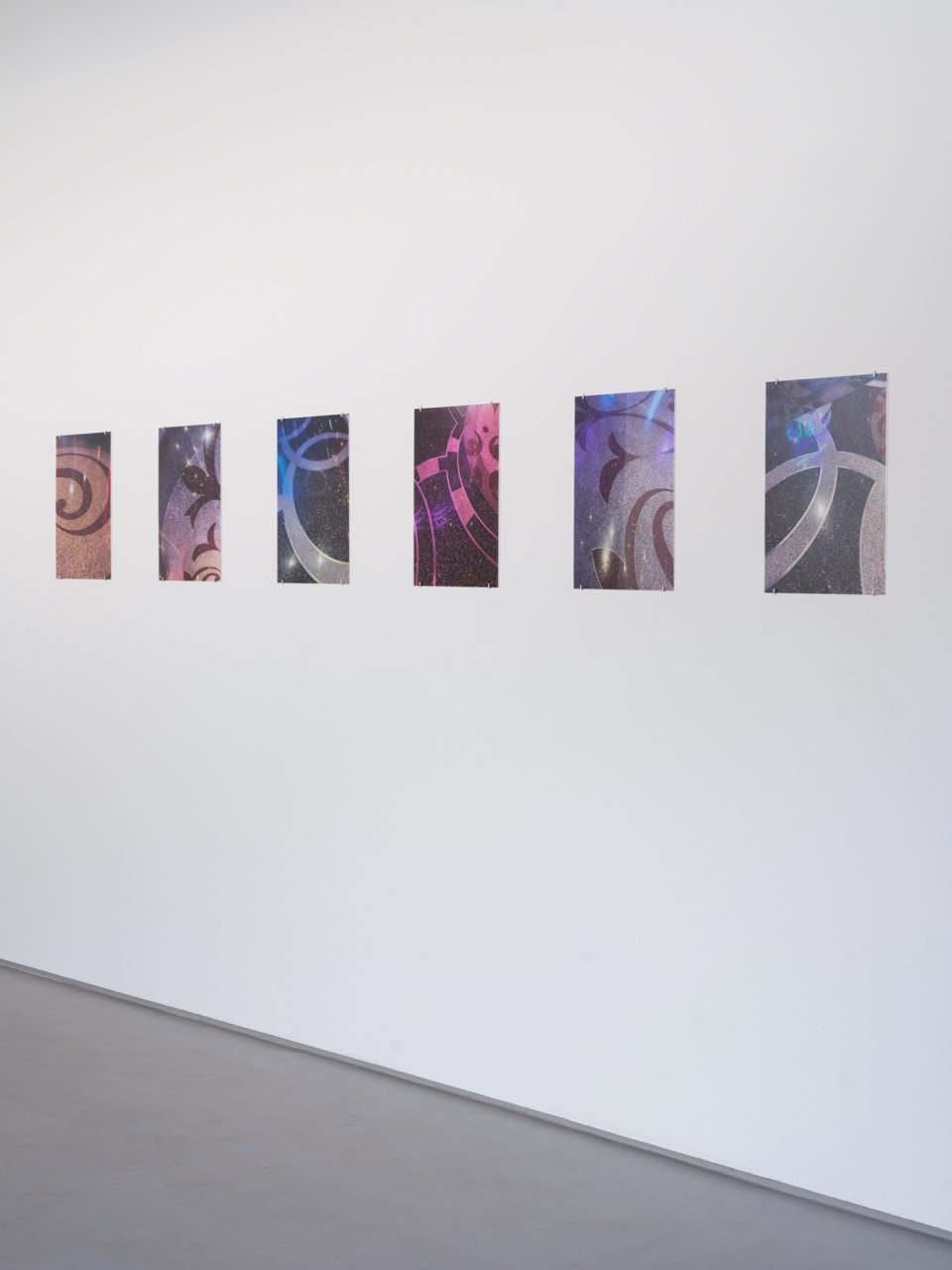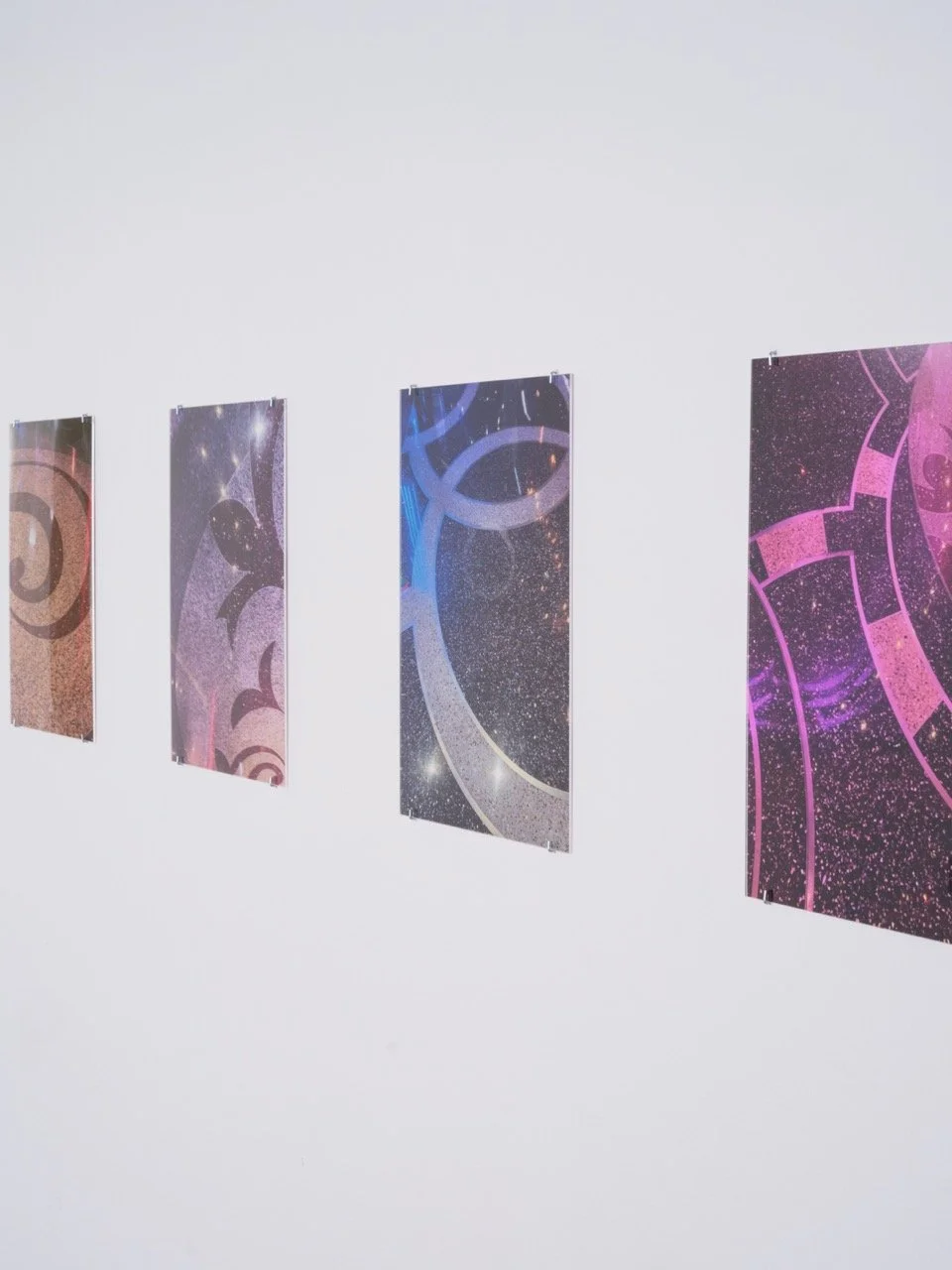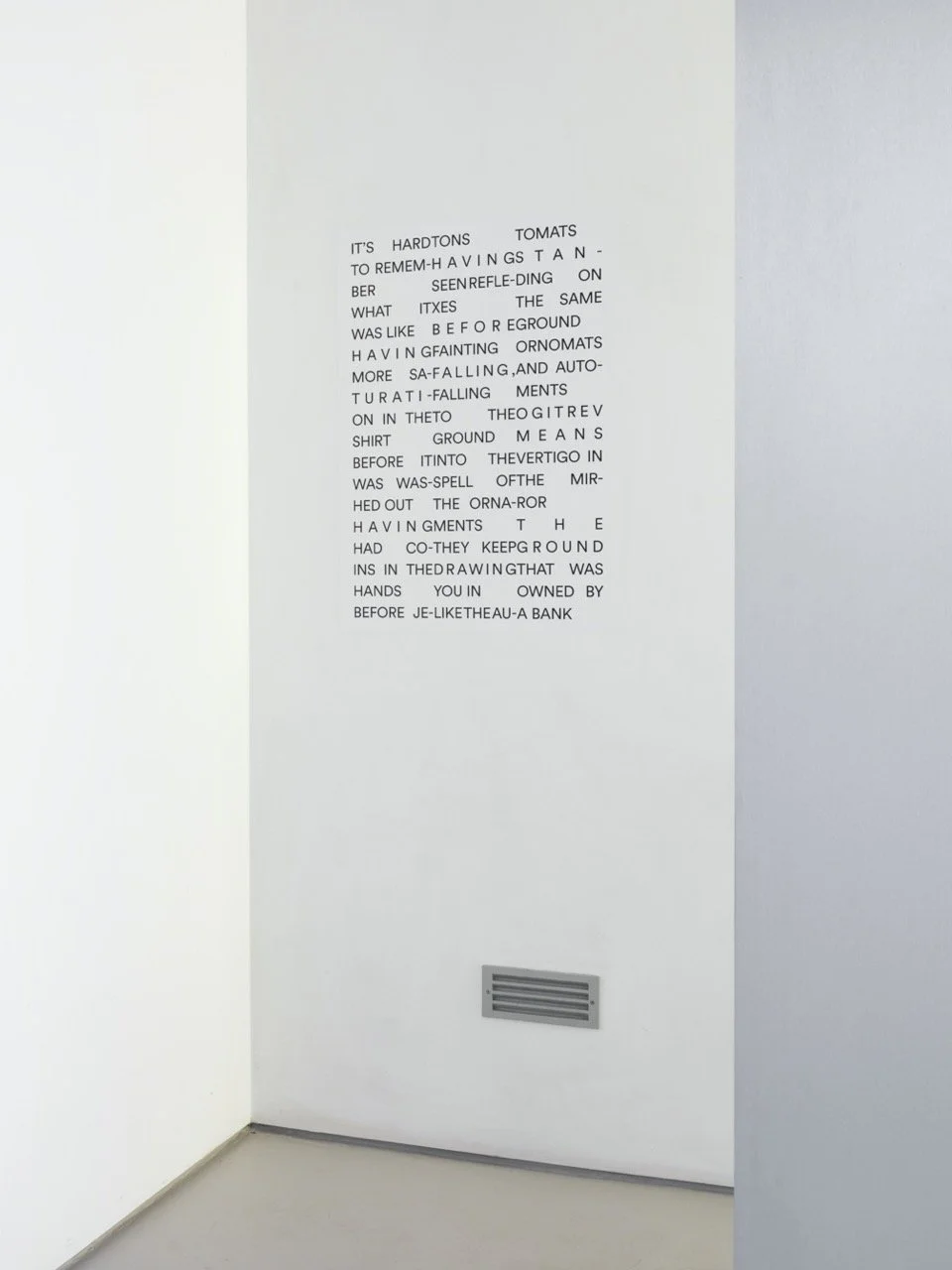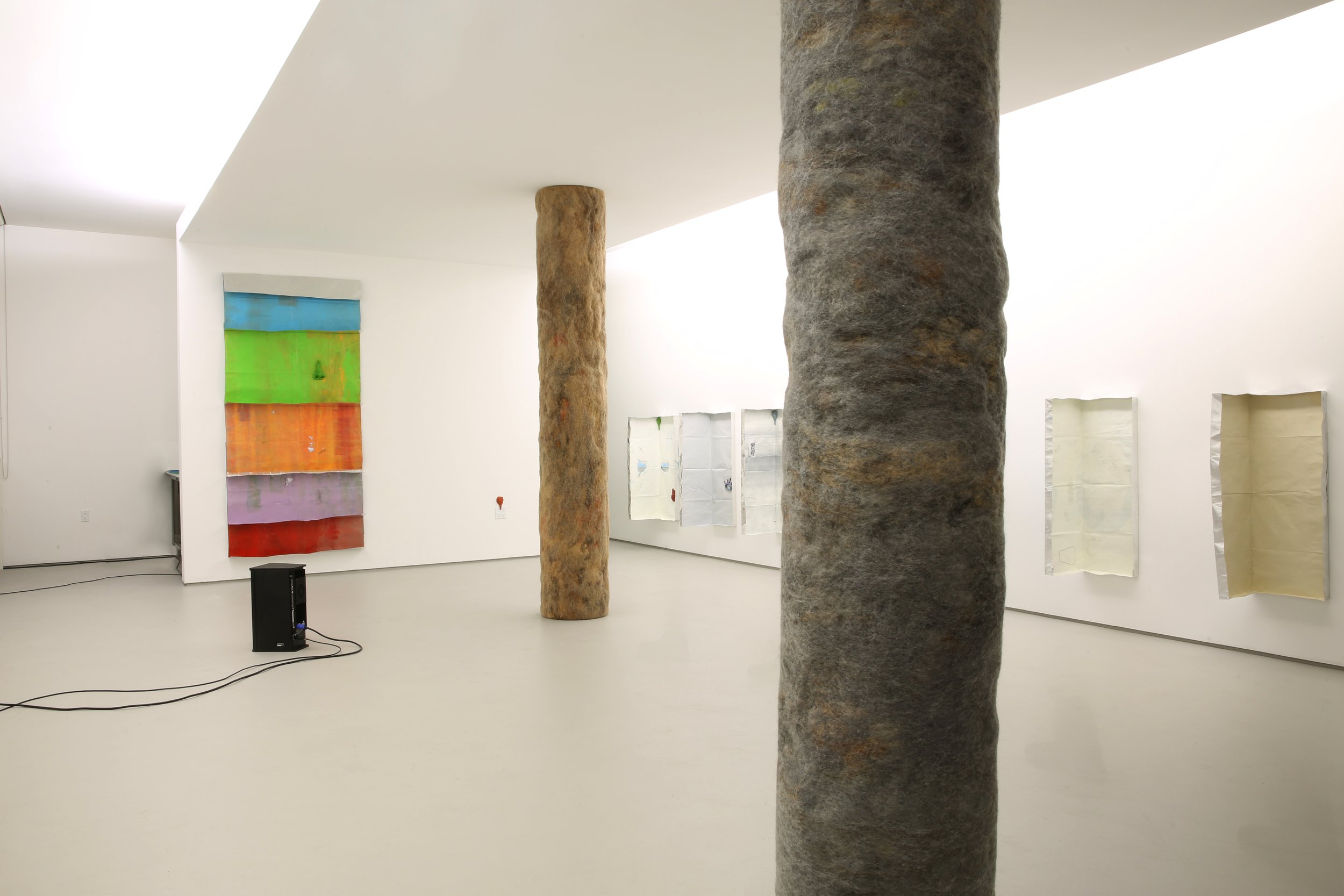Current and Upcoming Exhibitions
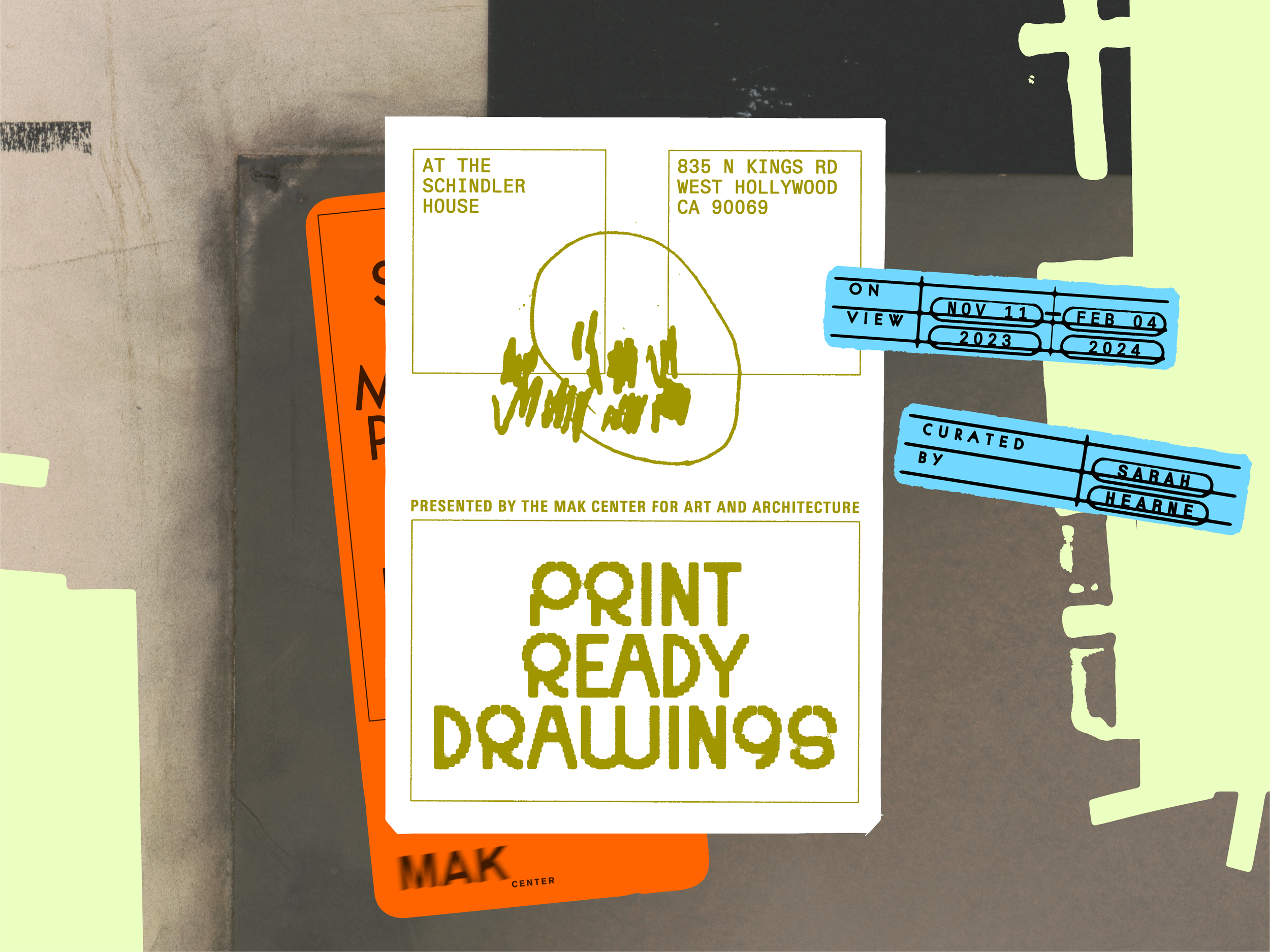
Print Ready Drawings
Image: Christina Huang
Between 1950 and 1989, an intense print culture emerged when architects began to engage with graphic media, producing drawings and collages intended for reproduction and publishing. Print Ready Drawings investigates the process behind these printed images. Emblematic of this period, composite and mechanical documents were produced from graphic supplies such as photographic papers, Letraset transfer sheets, Rapidograph pen sets, and other graphic templates. The exhibition features prints and reproductions, exploring a history of architectural authorship not via singular authors but through an examination and display of the material supplies and techniques of drawing production.
From “instant pictures” to “rapidraw” systems, the items crowding the architect’s desk from the mid-century reflected a preoccupation with speed and efficiency. With a flourishing of supplies and materials that transformed the work of many in the graphic fields, this was a period in which architects engaged widely with technologies of printing and printmaking. Whether in the service of the distribution of working drawings, or in the making of carefully stamped lithographic multiples, architects worked to make their architecture print ready.
Through a selection of 12 case studies, Print Ready Drawings highlights these miniature paper landscapes. Across their surfaces are expressions of control: annotation marks, enlargement instructions, manufacturer tags, and watermarks, along with evidence of any number of unacknowledged contributors.
Drawings in this exhibition are viewed as microcosms of the material world, and their convergence in each document tells a social and production history of architectural work. Their organization into technical affinities produces curious pairings, like Lina Bo Bardi and Roger Katan, whose magazine cover designs constitute parallel case studies of contextual and material appropriation. Other groupings include scientific illustrator Gloria Brown Simmons, Eames Office, and Herbert Bayer’s World Geo-Graphic Atlas.
Print Ready Drawings also includes a variety of production ephemera, technical manuals, and samples, alongside artist’s films that turned the camera inward towards the process itself, including Richard Serra’s Color-Aid film. Several drawings featured in the exhibition, considered too fragile to be exhibited, are replicated through a process of material and technical research in conservation labs, manufacturing workshops, eBay, and oral histories. This research is documented in films made by Julie Riley and Jenny Leavitt that interpret and translate historical materials and modes of making.
The site of architectural authorship has long been found in drawings. By anonymizing the technical and foregrounding original marks and signatures, drawings played a crucial role in prioritizing cognitive acts over material labor — thus obscuring their intersection. This exhibition examines the architectural drawing as the arena of architectural work—the mundane, the repetitive, and the documents that convey how architects navigate the borders between private work and what is destined to be public.
Guest Curator: Sarah Hearne
Saturday, November 11, 2023
6–8 pm
Related Events
Sunday, January 21, 2024
12—2:30 pm
Saturday, February 3, 2024
3—4:30 pm
Print Ready Drawings is curated by Sarah Hearne, with curatorial assistance by Arianna Borromeo and support from the MAK Center exhibitions team Seymour Polatin, Exhibitions and Programs Manager and Brian Taylor, Curatorial Assistant. The exhibition features commissioned films by Julie Riley and Jenny Leavitt. Exhibition design is by Current Interests with conservation support from Paradise Framing. Graphic design is by Christina Huang.
Installation images: Joshua Schaedel
Print Ready Drawings was made possible, in part, with generous support from the Getty Foundation’s Paper Project Series. Additional support was provided by the Graham Foundation for Advanced Studies in the Fine Arts and the University of Colorado Denver, College of Architecture and Planning.
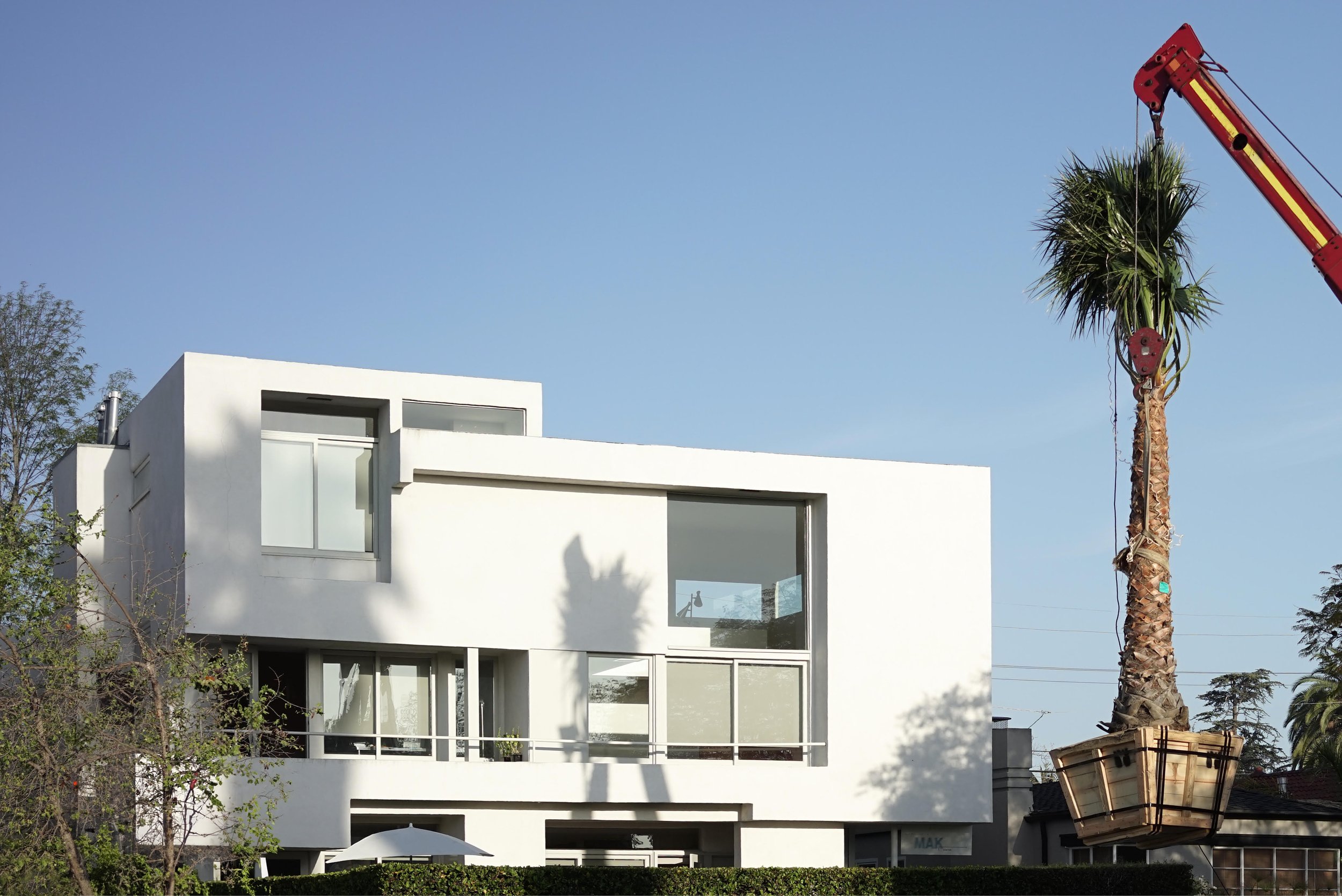
and yet you grow
Image: Courtesy of Christian Kosmas Mayer
The MAK Center for Art and Architecture is pleased to present the 22nd iteration of Garage Exchange Vienna—Los Angeles: and yet you grow featuring work by Vienna-based artist Christian Kosmas Mayer and Los Angeles-based artist Gala Porras-Kim at the Mackey Apartments Garage Top Gallery.
There is something growing in the gallery.
Nine years ago, Christian Kosmas Mayer planted a palm tree in the courtyard of the Mackey Apartments as part of MAK Center’s Artists and Architects-in-Residence Program. The residency ended and moved on to the subsequent groups of residents, but the palm tree remained, under the care of the institution, where it remains today.
In this exhibition, Christian Kosmas Mayer, joined by Los Angeles-based artist Gala Porras-Kim, revisits this living sculpture for an in-depth exploration of the functions and roles of the art institution. Both Mayer and Porras-Kim utilize the exhibition space as a site to foster discourse and critique how art institutions exercise forms of care within collecting practices. The MAK Center is a unique context as it is a non-collecting exhibition space, but it preserves and cares for three R. M. Schindler designed properties in Los Angeles. In this sense, the exhibition spaces are the collection.
This unique relationship between exhibition space and care practice forms the basis of and yet you grow. Porras-Kim's Forecasting Signal is a site-activated sculpture that extracts ambient water from the gallery environment and filters it through a hanging burlap sheet saturated with graphite, extended from the ceiling. As the water accumulates, it drips through the material onto a panel where it makes an image. This process occurs repeatedly through the duration of the exhibition, and turns the exhibition space itself into what could be considered a process-based drawing.
In dialogue with Forecasting Signal is Out of an instance of expiration comes a perennial showing, which also utilizes the environmental conditions of the space, introducing spores from the British Museum storage onto muslin fabric, encased within an acrylic shell. Over the course of the exhibition, a mold grows from these spores and becomes increasingly visible. While the spores originate from the British Museum, an institution with a long and fraught history of collecting practices, the mold grows in the exhibition at the MAK Center’s Mackey Apartment Garage Top Gallery, raising questions about the interconnectedness of art institutions.
Along with the palm tree, Mayer brings another tree into this exhibition, a sapling he grew in 2016 from the acorn of a majestic oak tree that lives in the yard of a small family house in Los Angeles’s Koreatown. This oak, one of the renowned 'Olympic Oaks' presented to all gold medal winners at the 1936 Olympic Games in Berlin, was planted by African American high jump champion Cornelius Johnson upon his return home. Over time, the historical significance of this tree was lost until Mayer uncovered this hidden history through his research.
Over the course of two years, Mayer worked in collaboration with the MAK Center and the California African American Museum for the preservation of this tree, resulting in its designation as a Historic Cultural Monument by the City of Los Angeles in 2022. However, despite this achievement, the destiny of the Olympic oak remains uncertain as the tree has declined in health due to neglect from a new property owner. Now, the young potted oak included in this exhibition, may soon be the solitary living ancestor to this historic legacy.
In and yet you grow, Mayer and Porras-Kim work to reposition the roles of the artist as life givers, and question the traditional role of the curator as collection caretaker safeguarding inanimate objects. Both of these works by Porras-Kim have been exhibited before in other institutions, but each retain a site specificity based on the environmental conditions in which they are shown. Complementing these pieces, Mayer’s site-specific interventions continue his investigation of institutional responsibility and break down the traditional roles of artist practice, curatorship, and architectural intervention. In the context of the palm tree, which now has become a part of the Mackey Apartments, Mayer inverts the Modern critique of museums being places where art dies, and situates the art institution as a site for continued life. In this exhibition, the MAK Center becomes a nursery—birthing, feeding, and parenting artworks with a life of their own.
ABOUT GARAGE EXCHANGE
Garage Exchange Vienna—Los Angeles seeks to foster relationships, conversations and collaborations in the arts between Los Angeles and Austria. In order to expand the cultural exchange at the core of the Artists and Architects-in-Residence program, the Austrian Federal Chancellery and the MAK Center invite Austrian and Vienna-based alumni residents to collaborate with L.A. artists and architects of their choosing at the Garage Top at the Mackey Apartments for the Garage Exchange Vienna-Los Angeles exhibition series.
Artists
Christian kosmas mayer
Christian Kosmas Mayer (b. 1976, Sigmaringen, Germany) lives and works in Vienna, Austria. His work produces and preserves a constellation of narratives about historical remains and representations that are often on the verge of disappearing, or have already been rendered imperceptible. Mayer’s projects, which are the outcome of extensive artistic research and close collaborations with specialists across various disciplines, transform the minor, forgotten, and obsolescent into material artifacts, discursive objects, multi-media installations, and performances. Linking technology to memory and care, his practice explores the methods by which important issues can be approached in conceptually and aesthetically surprising ways: techniques of reversal, of compressing and stretching time, of looking at things from both ends at once.
He has had solo exhibitions at Vienna’s mumok – Museum moderner Kunst Stiftung Ludwig Wien, Austria ; Belvedere Museum, Vienna, Austria; Austrian Cultural Forum New York, USA; MAK Center, Los Angeles, USA; University Gallery of the Custody, Dresden, Germany; Zamek Culture Center, Poznan, Poland; Kunststiftung Baden-Württemberg, Stuttgart, Germany; Austrian Cultural Forum Warsaw, Poland; Galerie Nagel Draxler, Berlin, Germany; Galerie Mezzanin, Geneva, Switzerland and participated in biennales and group exhibitions such as the 26th Bienal de São Paulo, Brazil; Manifesta 7, Rovereto, Italy; Vienna Biennale 2019, Austria; Biennale Gherdëina 2016, Italy; Kunstmuseum Bonn, Germany; Kunstmuseum Stuttgart, Germany; Marta Herford, Germany; Leopoldmuseum, Vienna, Austria; Torrance Art Museum, Los Angeles, USA; ZKM I Center for Art and Media Karlsruhe, Germany; Kunsthalle Wien, Vienna, Austria; Secession, Vienna, Austria; and numerous other venues.
Gala Porras-Kim
Gala Porras-Kim (b. 1984, Bogotá) lives and works in Los Angeles and London. Her work is about the social and political contexts that influence how intangible things, such as sounds, language and history, have been framed through the fields of linguistics, history and conservation. The work considers the way institutions shape inherited codes and forms and conversely, how objects can shape the contexts in which they are placed.
Porras-Kim received an MFA from CalArts and an MA in Latin American Studies from UCLA. She has had solo exhibitions at Museo Universitario de Arte Contemporáneo (MUAC), Mexico City, The Fowler Museum, Los Angeles, Centro Andaluz de Arte Contemporaneo, Seville, Kadist, Amant Foundation, Gasworks, London, and CAMSTL, and upcoming at Leeum Museum of Art and MMCA, Seoul, MCA Denver, and Carnegie Museum of Art. Her work has been included in the Whitney Biennial and Ural Industrial Biennial (2019), and Gwangju and Sao Paulo Biennales (2021) and Liverpool Biennial (2023). She was a Fellow at the Radcliffe Institute for Advanced Study at Harvard University (2019), the artist-in-residence at the Getty Research Institute (2020-22), and currently a fellow at Museo delle Civiltà in Rome.
This exhibition series is made possible by The Austrian Federal Chancellery.
Installation images: Tag Christof.
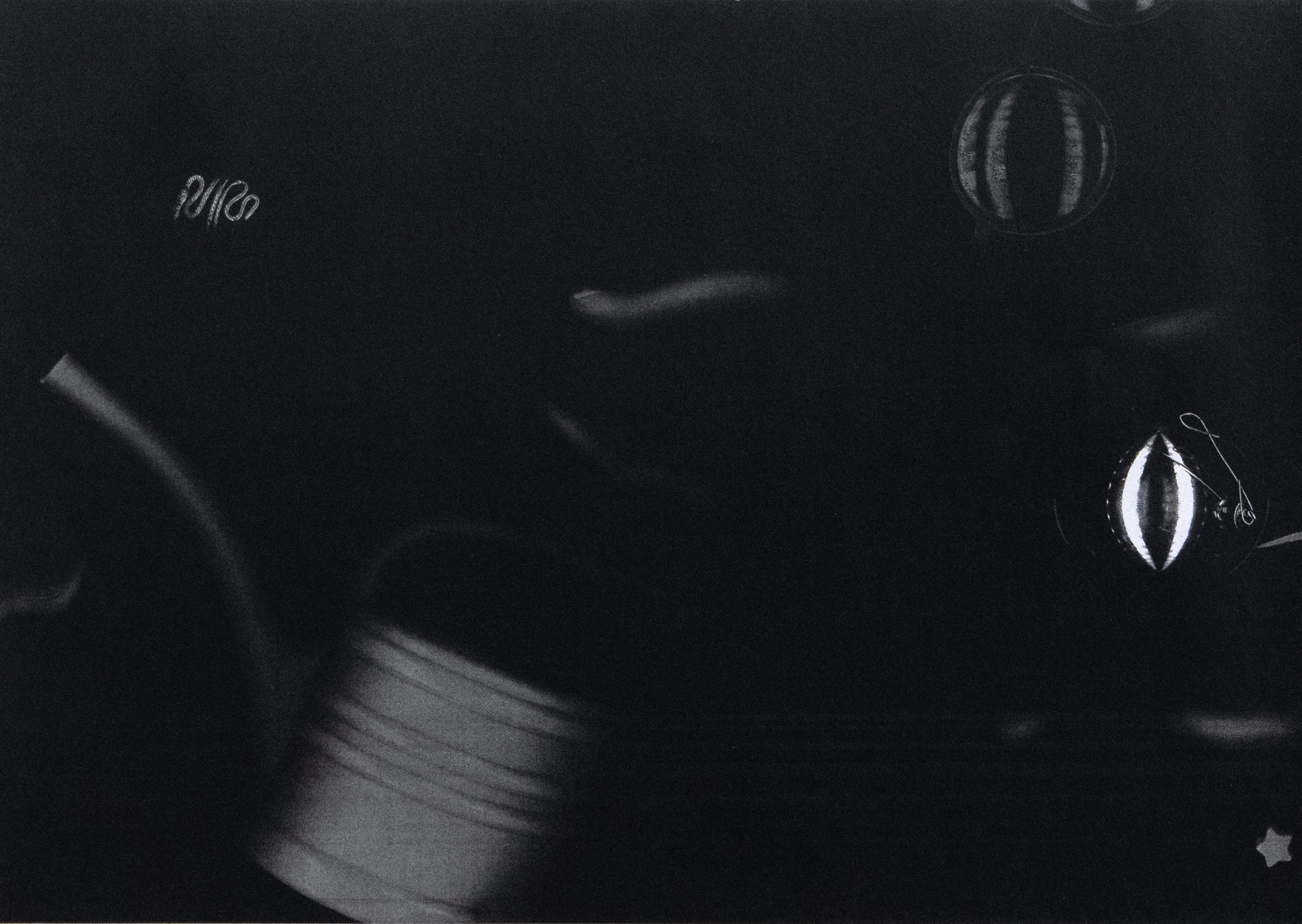
Final Projects: Group LIII
The MAK Center for Art and Architecture is pleased to announce Final Projects: Group LIII, exhibiting three works produced by our Artists and Architects-in-Residence, Simona Ferrari, Céline Brunko, and Philipp Fleischmann. Final Projects: Group LIII marks the culmination of the 53rd iteration of the Artists and Architects-in-Residence Program at the Mackey Apartments.
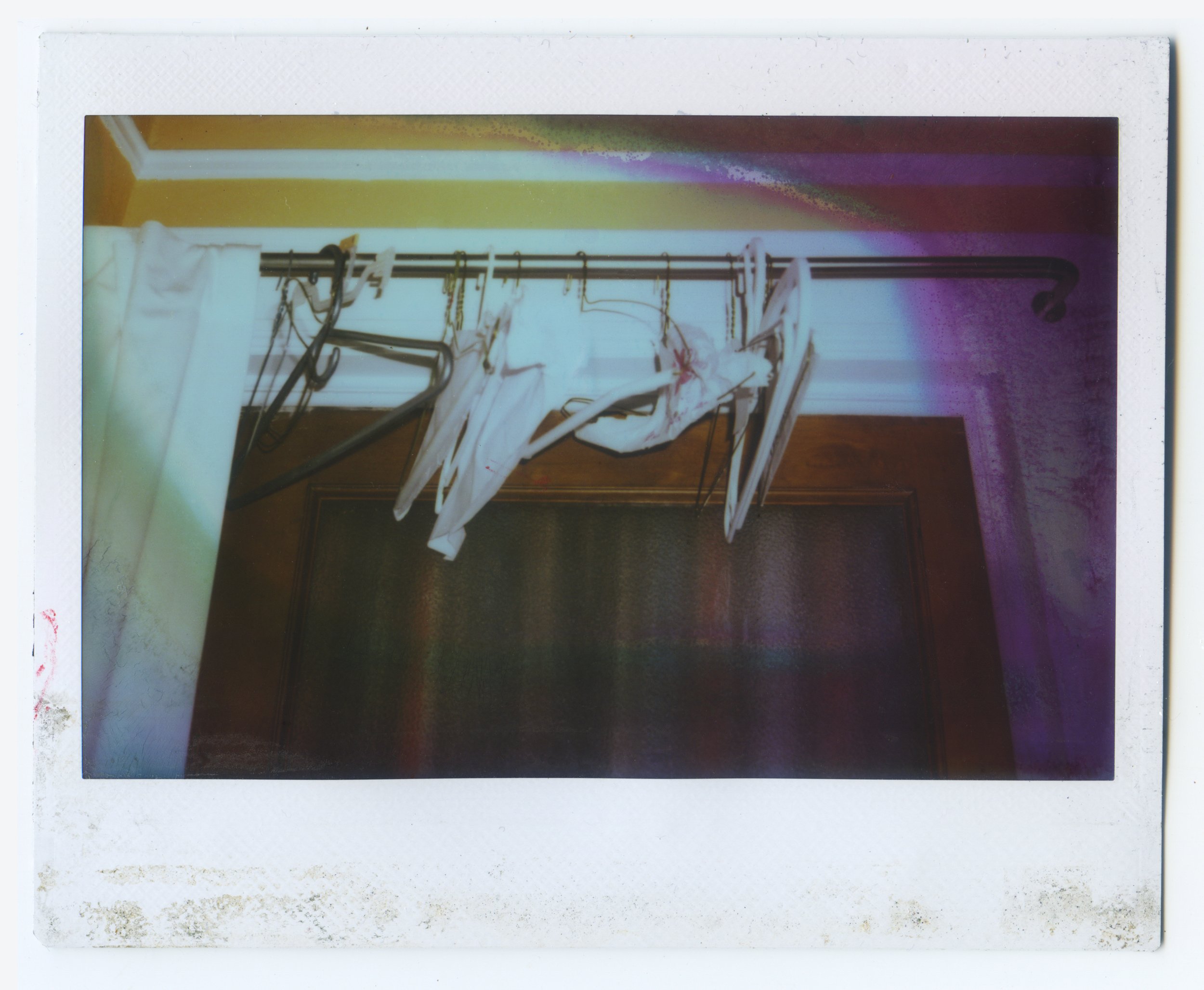
Garage Exchange Vienna—Los Angeles: Plastic, Plastic, Plastic
Header image: Courtesy of the artists.
The MAK Center for Art and Architecture is pleased to present the 21st iteration of Garage Exchange Vienna—Los Angeles: Plastic, Plastic, Plastic featuring new work by Vienna-based artist Kerstin von Gabain and Los Angeles-based artist Ellen Schafer at the Mackey Apartments Garage Top Gallery. The artists confront the legacy of Modernist idealism that Schindler considers in his architectural work alongside the proliferation of mass-produced materials.
Plastic, Plastic, Plastic
Text by Angella d’Avignon
“The German poet and playwright Bertolt Brecht hated the Westside. He hated Hollywood, the only part of Los Angeles he seemed to be familiar with. When he arrived in 1941, Santa Monica was flat while he lived there—nothing but manicured lawns and oil derricks in dust fields.
The Mackey Apartments are replicated* at Disney World in Florida to signify a modern California apartment—the platonic ideal of apartments, landmarked as classic Los Angeles architecture although they were built in the last eighty or so years. The idea that California held the dream of the mythic West itself in its "empty" landscape, that acreage could ensure legacy, that private property meant success. These precious places built by eccentrics and exiles, polished apartments made for one specific person, sit empty most of the time, while renters drift in and out of sublets and single family studios. These interiors hold other people's boring day to day existences, hovering together anachronistic in the psychic space of a room.
In Los Angeles, you can tell the time of the month by the amount of furniture on the sidewalk—entire sofa sets, wayward mattresses, coffee tables and glass cabinets. Recognizable objects from one's interior is a kind of body horror—I once spotted a stack of metallic plastic cups I'd bought for my first apartment in my twenties from a store I thought was expensive. No one else had party cups like mine at the time, yet here they are on someone else's stairs, outside someone else's apartment that looks replicable, like it could be anywhere in suburban Southern California.
The word polymer means ‘of many parts,’ and polymers are made of long chains of molecules. Polymers abound in nature. Cellulose, the material that makes up the cell walls of plants, is a common natural polymer. Synthetic polymers are made up of long chains of atoms, arranged in repeating units, often much longer than natural ones. The length of these chains, and the patterns in which they are arrayed, make polymers strong, lightweight, and flexible. In other words, it’s what makes them so plastic.
Plastic ensured that human manufacturing would never be limited by the resources offered by the natural world. Roland Barthes called plastic ‘miraculous,’ writing that ‘plastic is the very idea of its infinite transformation,’ since any substance—ivory, tortoiseshell, glass—could be made from plastic. Barthes continues, ‘The hierarchy of substances is abolished: a single one replaces them all: the whole world can be plasticized, and even life itself since, we are told, they are beginning to make plastic aortas.’ The 21st century world is saran wrapped: by 2050, the ocean will be more plastic than water.
While plastic wooed the mid-century U.S, long-chains of houses proliferated across Brecht's hellish flat fields, entire neighborhoods sprouting up like manicured weeds, filling with mass manufactured domestic housewares made in consumer-grade plastic, taunting the poet's former presence in Los Angeles, after he fled again for his native Germany after 15 years of exile in the U.S. during World War II. Layers of layers of daily life held forth in these houses and apartments, each one haunting the next generation while the plastic utensils, hair combs, high chairs, bed pans, and party cups outlive every vision of utopia that anyone's had about Los Angeles since.
The narrative of transience is scaled by class. The burdens of precarity and desire meet in the well-appointed interiors whose objects' total value will never outweigh the endlessly unaffordable exterior in which they're housed. We are not the objects we consume but rather the paths we tread through spaces anonymous to anyone who treads them in our absence.”
* While the Prime Time Cafe at Disney World’s Hollywood Studios is not an exact replica of the Mackey Apartments, the Imagineers used it as inspiration to construct a general set of modern California apartments representing idealized mid-century living.
KERSTIN VON GABAIN
Kerstin von Gabain, born 1979 in Palo Alto, California, lives and works in Vienna. She graduated from the Academy of Fine Arts Vienna (2003). Recent solo and duo exhibitions include Imitation, EXILE Vienna (2023); Compliments, Wieoftnoch, Karlsruhe (2021); Umeå, V.esch, Vienna (2021); I’ll see you when I see you, EXILE Vienna (2021); Dark Euphoria, Austrian Museum of Applied Arts, Vienna (2021); Happiness Machines (2020). She has been included in recent group exhibitions at Mumok, Vienna (2022); Neuer Kunstverein Wien, Vienna (2022); Salzburger Kunstverein, Salzburg (2022); Kunstverein Schattendorf, Schattendorf (2020); HAUS Wien 2020, Vienna (2020), among others. She is represented by EXILE Vienna.
ELLEN SCHAFER
Ellen Schafer, born 1985 in New York City, lives and works in Los Angeles. She received a BA from the Glasgow School of Art (2012), was an MFA candidate at USC’s Roski School of Art (2014-15), and received an MFA from the University of California, Irvine (2020). Recent solo and duo exhibitions include Nickelodeon Universe, Galerie Wonnerth Dejaco, Vienna (2021); Artissima Art Fair, Turin (2021); Simplicity, an exhibition in two parts staged between New Low and The Fulcrum Press, both Los Angeles (2021), among others. She is represented by Wonnerth Dejaco in Vienna.
Artists
Related Events
Thu, June 8, 2023
6:30—8:30 pm
This exhibition series is made possible by The Austrian Federal Chancellery.
Installation images: Josh Schaedel.

Seeking Zohn
Graphic design by Alejandro Olávarri, 2023
The MAK Center for Art and Architecture is pleased to present Seeking Zohn, an exhibition of works by Mexican-Austrian architect and engineer Alejandro Zohn (1930-2000) through contemporary photography and design. The exhibition takes as subject Zohn’s robust civic and commercial architecture built in Guadalajara from the 1950s to the 1990s, with an interest in how the city’s social, cultural, and material histories are interwoven with his structures.
Commissioned photography and video by artists Adam Wiseman, Lake Verea, Onnis Luque, Sonia Madrigal, and Zara Pfeifer veer from the documentary conceit of architectural photography toward the subjective. This work is decidedly interpretive, seeking out the many narratives contained within parks, markets, collective housing, malls, and bureaucratic buildings. Zohn, a Jewish emigree who fled Vienna during World War II at the age of 8, dedicated his career to creating a modern Guadalajara. Through these photographs—acts of investigation and translation—we find glimpses of his utopian desire amidst the chaos, beauty, and violence of everyday life.
Seeking Zohn is the first presentation of Zohn’s architecture in Los Angeles. The transposition of his work to L.A. places it in dialogue with R.M. Schindler’s designs. As both architects are Jewish émigrés, a parallel exists between the Austrian-Mexican and the Austrian-Angeleno’s experiences. The installation at the MAK Center creates a resonant triangulation between three cities: Vienna, Guadalajara, and Los Angeles. Billboards placed in the garden navigate between the urban scale of Zohn’s buildings and the intimacy of the Schindler House. Household objects designed by Studio Fabien Cappello and fabricated by artisans in Guadalajara build a bridge between the civic and domestic realms.
As a practitioner, Zohn is a lesser-known figure outside of Mexico, and his work has yet to be widely published or exhibited in the United States. A generation after fellow Guadalajara-born architect Luis Barragán and Mexican-Spanish architect Félix Candela, much of Zohn’s architecture aligns with late modernism, a period that’s recently come under re-evaluation. With this consideration comes an expansion of the conventional parallels drawn between Los Angeles and Mexico, which often focuses on designs and actors associated with midcentury modernism. While Zohn’s early career shows the influence of Candela’s thin-shell concrete arches, which he called “cascarones,” his later designs are marked by expressive structural gestures, forming a singular geometric vocabulary that carries from project to project and a sensitivity to the social conditions of the urban fabric.
Notable projects in Seeking Zohn include his most famous building, Mercado Libertad–San Juan de Dios (1958-9), an indoor public market first proposed as his thesis project; the bandshell Concha Acústica (1958) in Parque Agua Azul; Unidad Deportiva Adolfo López Mateos (1956-59) sports center; the mall and parking garage Edificio Mulbar (1973-74); CTM-Atemajac (1977-79), a collective housing project; and one of his final works, Archivo del Estado de Jalisco (1985-91), a state office building and archive. Artists were each assigned a site for photographic inquiry, and the results suggest an architecture bound to the stories and conditions of an evolving city. These works are accompanied by select images, publications, and artifacts from Zohn’s archive, courtesy of his daughter, Diana Zohn Cevallos.
Artists
onnis luque, mexico city
Onnis Luque is an architectural photographer who studied architecture at The National Autonomous University of Mexico (UNAM). His work has been published in various magazines such as Domus, Arquine, MONU, Architectural Digest, and PLOT and has been included in several architectural biennials and competitions. His book, USF / DF Appropriation Tactics (CONACULTA / Ediciones Acapulco 2014), documents several years of photographing the Santa Fe Housing Unit in his native home of Mexico City.
Adam Wiseman, Mexico City/London
Adam Wiseman (Mexico City 1970) is a graduate of the International Center of Photography in New York and a former printer at Magnum Photos. His relationship to photojournalism has marked his distinctive career. Wiseman’s subjects are interposed with his understanding of image as something between document and intersubjectivity. He is a Senior Lecturer at the University of East London and divides his time between Mexico City and London, giving lectures and workshops while developing new work.
Lake Verea, Mexico City
Lake Verea is an artist duet formed in 2005 by Francisca Rivero-Lake and Carla Verea. Their work explores concepts of expanded photography through installation, textile, performance, sculpture, and video. By experimenting with photographic techniques and formats that blur questions of authorship, they build narratives that highlight their combined identity to create intimate portraits of architecture, artists’ archives, and people. They’ve poured through the archives of Mexican artist Frida Kahlo, architect Luis Barragán, and German émigrés Josef and Anni Albers, amongst others. Lake Verea’s 2011-2018 “Paparazza Moderna” project explores the idea of architecture as a living being through portraits of single-family houses designed by modernist architects Walter Gropius, Marcel Breuer, Richard Neutra, Rudolph M. Schindler, Ludwig Mies van der Rohe, and Philip Johnson.
sonia madrigal, mexico
Sonia Madrigal lives and works in Ciudad Nezahualcóyotl. Her work explores different visual narratives that reflect on personal and collective concepts of gender, the body, violence, and territory, with a locational focus on the East Metropolitan Zone of Mexico City. She is part of the Sistema Nacional de Creadores de Arte/National System of Art Creators (FONCA). In 2018, she participated in the XVIII Biennial of Photography of the Centro de la Imagen. She was awarded a residency at the Encuentro de Colectivos de Geografía Crítica y Geografías Autónomas (Ecuador, 2019). Madrigal has participated in exhibitions across Latin America, Europe, and the US and published her work in Harper's, Aperture, and The Guardian.
zara pfeifer
Zara Pfeifer is an artist based in Vienna and Berlin whose work is concerned with the social phenomena of large-scale infrastructure. Her documentation of the modernist housing project Alterlaa (“Du, meine konkrete Utopie,” 2013-17) and her series on truck drivers (“Good Street!,” 2018-2022) involves extended periods of immersion in the day-to-day life of her subjects. She has worked with institutions, including the MAK Center in Los Angeles and the Austrian Cultural Forum in Berlin. Her publications include Monocle, ZEITmagazin, and Monopol, and she has received a studio grant at ISCP New York from the Austrian Federal Government. Her book ICC Berlin was published in 2022 by Jovis Verlag. Pfeifer studied architecture at the Academy of Fine Arts Vienna and photography at the Friedl Kubelka School for Artistic Photography in Vienna. She holds lecturing positions at the Technical University Vienna and the Technical University Berlin.
STUDIO FABIEN CAPPELLO
Fabien Cappello (France, 1984) is a furniture and product designer. He studied at the University of Art and Design (ECAL) in Lausanne, Switzerland and obtained a master’s degree in Design Products at the Royal College of Art in London in 2009 under the tutelage of Martino Gamper and Jurgen Bey. Estudio Fabien Cappello is a spacial and furniture firm currently based in Guadalajara, Jalisco, after four years in Mexico City. The design studio’s work is part of the permanent collection at SFMOMA, The Denver Museum of Contemporary Art, and the National Centre for the Arts (CNAP) in Paris, France. Cappello’s work shares a high consideration for craft techniques and industrial production, reflecting design through people and their interactions with space, environment, and material culture.
Seeking Zohn is curated by Los Angeles–based critic and curator Mimi Zeiger and Mexico City–based collaborative practice Tony Macarena: Lorena Canales and Alejandro Olávarri.
Thursday, May 11, 2023
12:00—1:00 pm
Thursday, June 1, 2023
12:00—1:00 pm
Seeking Zohn is made possible, in part, with generous support from the City of West Hollywood, the Graham Foundation for Advanced Studies in the Fine Arts, the Pasadena Art Alliance, the Los Angeles City Department of Cultural Affairs, Ago Projects, the Austrian Consulate General Los Angeles, Plant Material, and University of East London Production Support.
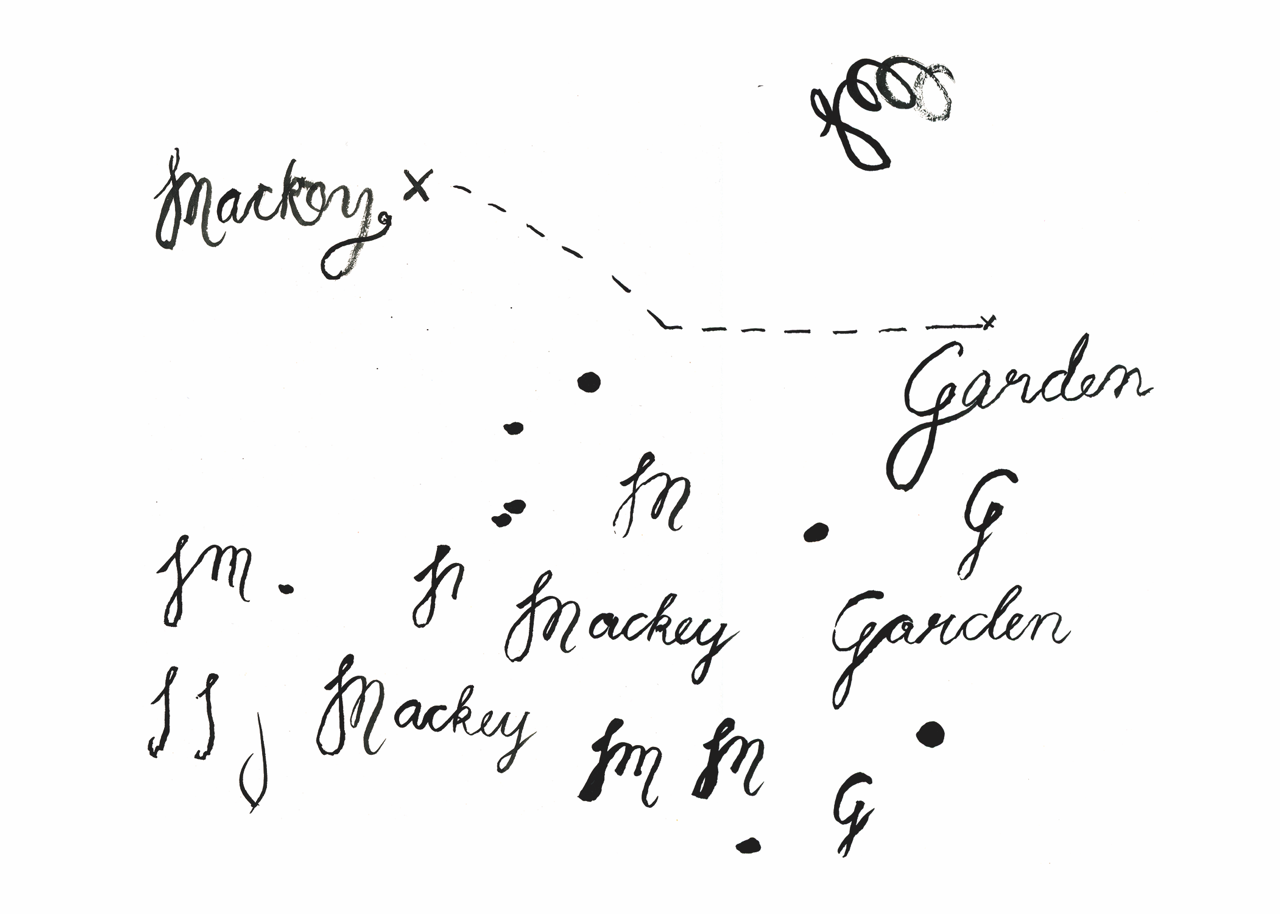
Final Projects: Group LII
The MAK Center for Art and Architecture is pleased to announce Final Projects: Group LII, exhibiting three works produced by our Artists and Architects-in-Residence, Cathleen Schuster, Marcel Dickhage, Louise Morin, & Melanie Ebenhoch. Final Projects: Group LII marks the culmination of the 52nd iteration of the Artists and Architects-in-Residence Program at the Mackey Apartments.
Read more about our residency program here.
The Artists & Architects-in-Residence Program at the Mackey Apartments is funded by the Federal Ministry for Arts, Culture, the Civil Service and Sport, in cooperation with the MAK — Museum of Applied Arts, Vienna.
Image Credit: Melanie Ebenhoch, 2022
Artists
Cathleen Schuster and Marcel Dickhage
titre provisoire (Cathleen Schuster/Marcel Dickhage) live and work in Berlin. They are working from a conceptual approach in time-based media and video installation. Recently, they developed the online journal Rosa Mercedes Issue No. 4 „Coincidences in Prepositions“ in collaboration with Renan Laru-an, the Vargas Museum Manila and the Harun Farocki Institut Berlin. Recent exhibitions include the public space of Semmering in Austria, Singapore Biennale 2019, D21 Leipzig, Sharjah Art Foundation, after the butcher Berlin, Taxispalais Kunsthalle Tirol, Kunstverein Harburger Bahnhof Hamburg, Berlinische Galerie, GfZK Leipzig, Ludlow 38 New York, Kunsthalle Düsseldorf, SAVVY Contemporary and the Kyiv Biennale 2015. They are currently developing a new film installation for a solo exhibition in spring/summer 2023 in the Halle für Kunst in Lüneburg.
Louise Morin
Louise Morin is a French architect and designer who graduated from Central Saint Martins College of Art and Design in London and ENSAPVS Paris architecture school. She has collaborated with several architectural offices in Berlin, Buenos Aires, and Stockholm. Established in Paris since 2018, her work ranges from design to installation and architecture. Her work is currently exhibited in the Île de France architecture and landscape biennale (BAP Visible Invisible 05.22—07.22).
Melanie Ebenhoch
Melanie Ebenhoch (*1985) studied at the University of Applied Arts in Vienna, at HKU Utrecht, and at the Sandberg Institute Amsterdam. She has exhibited at the Museum der Moderne Salzburg, Belvedere 21, Kunsthalle Wien, Galerie Martin Janda Vienna, Galerie der Stadt Schwaz, Union Pacific London, L’Inconnue Montreal, Heiligenkreuzerhof Vienna, Kevin Space Vienna, and Hester New York. She has upcoming exhibitions at KUnsthalle Bratislava, MQ Artbox Vienna, Kunstraum AA Bludenz, and the MAK Schindler Residency in Los Angeles.
Melanie Ebenhoch’s project is also supported by the Austrian Consulate General Los Angeles.
The Artists & Architects-in-Residence Program at the Mackey Apartments is funded by the Federal Ministry for Arts, Culture, the Civil Service and Sport, in cooperation with the MAK — Museum of Applied Arts, Vienna.
Image Credit: Melanie Ebenhoch, 2023
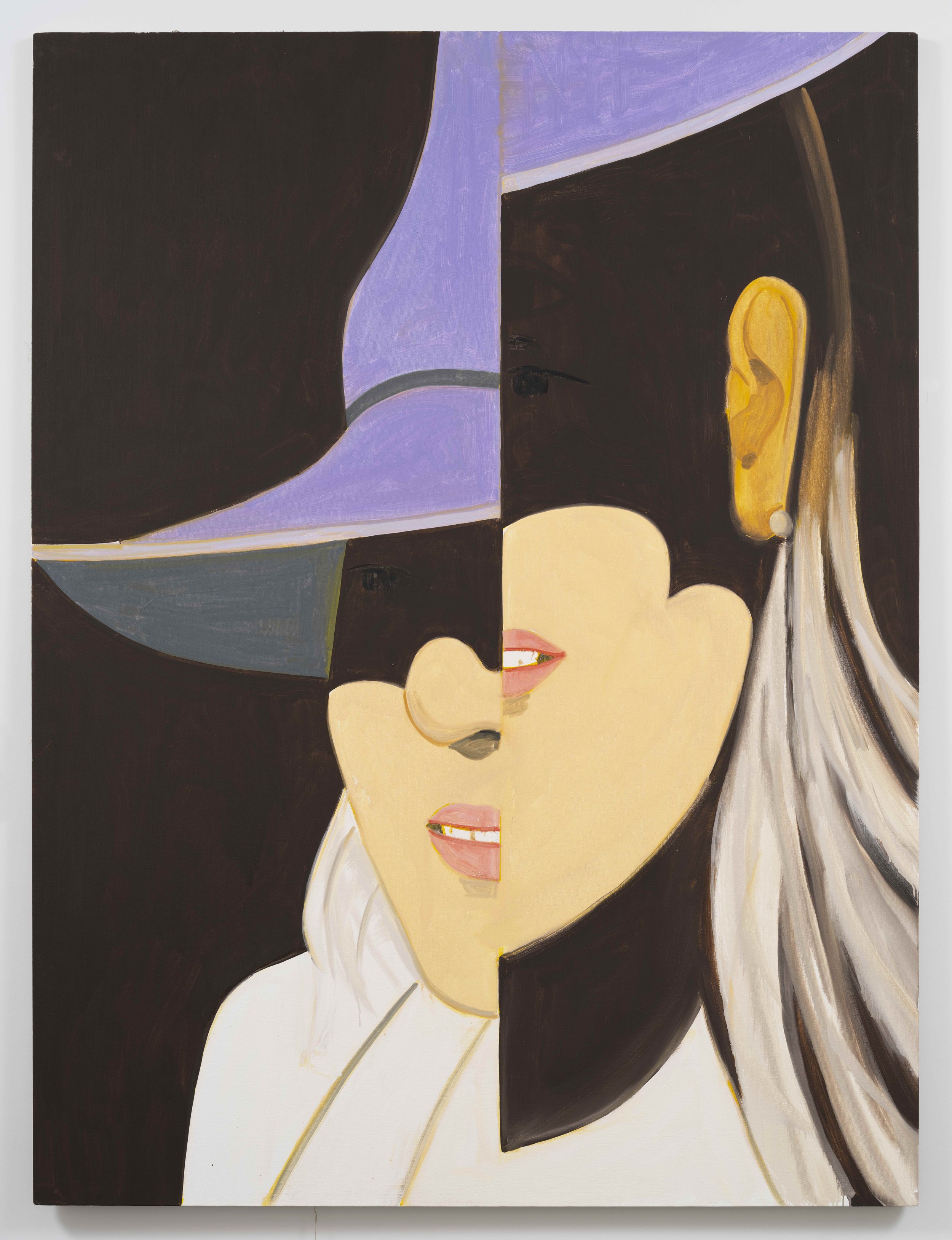
Alex Katz: Sunrise
The MAK Center for Art and Architecture is pleased to present an exhibition of new portrait series by Alex Katz.
The exhibition Sunrise by Alex Katz is the latest iteration by the 95-year-old artist’s ongoing series he refers to as ‘splits’. Using a cut-up technique he blends inspiration from Manet’s pictures of women in hats in the sun, the fractured imagery from early cubism as well as the ‘cheap’ quality in Fassbinder’s ‘Beware of a Holy Whore,’ these large-scale immersive portraits of Sunrise Ruffalo encapsulate the fleeting nature of the gaze inside everyday life.
Alex Katz
Alex Katz (b. 1927, Brooklyn, NY) is the preeminent painter of modern life. Acclaimed for his iconic portraits and impressionistic landscape depictions, the now 95-year-old Katz has inspired generations of painters.
Katz's work has been the subject of numerous retrospectives and solo presentations over the course of his expansive career. His work is in the permanent collections of over one hundred museums worldwide, including the Museum of Modern Art, the Metropolitan Museum of Art, and the Whitney Museum of American Art in New York; the Smithsonian Institute, Washington, D.C.; the Museum of Fine Arts, Boston; The Alfond Collection of Contemporary Art, Cornell Fine Arts Museum, Rollins College, Winter Park, Florida; the Art Institute of Chicago; the Tate, London; Centre Georges Pompidou, Paris; el Museo Nacional Centro de Arte Reina Sofia, Madrid; the Museum of Contemporary Art Tokyo; and the Nationalgalerie, Berlin.
Katz lives and works in New York. He was the 2019 Honoree at TWO x TWO for AIDS and Art and had a solo survey exhibition at the Fosun Foundation in Shanghai in 2020. Recent exhibitions include a solo show at the Museo Nacional Thyssen-Bornemisza, Madrid, and a retrospective on view at The Guggenheim in New York until February 2023.
This exhibition is presented with support from Gladstone Gallery.
Above Image: Alex Katz , Sunrise 12, 2021. © Alex Katz / VAGA at Artists Rights Society (ARS), NY Courtesy of the artist and Gladstone Gallery.

Garage Exchange: Maruša Sagadin & Jacqueline Kiyomi Gork
The MAK Center for Art and Architecture is pleased to present the twentieth iteration of Vienna — Los Angeles Garage Exchange: Maruša Sagadin & Jacqueline Kiyomi Gork. Vienna-based artist Maruša Sagadin collaborates with Los Angeles artist Jacqueline Kiyomi Gork, responding to each other’s work to develop an exhibition for the Mackey Apartments’ Garage Top gallery.
Sagadin and Kiyomi Gork engage in a collaborative-method of work-creation and installation, presenting new responsive sculptural and sound works for Garage Exchange.
Sagadin produces a new series of wall-hung architectural paper works testing the spatial and symbolic relationship between two-and three-dimensional urbanism. Advertising posters are overpainted, glued and reinforced with aluminum foil. Paper is weathered and folded and hung into fixed shapes referencing elements of the city—blinds, curtains, air conditioning units, railings, rain gutters, or fountains. The shiny aluminum juxtaposed the old and weathered painted posters, mirroring the colors to amplify past visions of the future and rays of light for warmth. These text-less color fields obfuscate the poster’s informational function, drawing attention instead to recirculation, recycling, and impermanence. Small objects playfully emphasize the surrounding context.
Kiyomi Gork continues their attenuator series of soft sculptures, designed to absorb unwanted sound in a space. Previously the attenuator sculptures have taken the form of figurative and geological large scale objects. The new works take an architectural focus in the form of tall wool columns stretching from the floor to ceiling.
The sculptures’ material properties complement a responsive sound work Kiyomi Gork fabricated on-site for the exhibition. Microphones in the Garage Top’s stairwell record noises made by the outdoor environment and visitors entering the space. The sound is then projected and echoed into the shared gallery, further activating the site and interacting with both of the artist’s sculptural works– amplified and softened at the same time.
ABOUT GARAGE EXCHANGE
Garage Exchange seeks to foster relationships, conversations and collaborations in the arts between Los Angeles and Austria. In order to expand the cultural exchange at the core of the Artists and Architects-in-Residence program, The Austrian Federal Chancellery, and the MAK Center invite Austrian and Vienna-based alumni residents to collaborate with L.A. artists and architects of their choosing at the Garage Top at the Mackey Apartments for the Garage Exchange Vienna-Los Angeles exhibition series.
Artists
Jacqueline Kiyomi Gork
Jacqueline Kiyomi Gork (born: 1982, Long Beach, CA) has been working with the intersection of sound, sculpture and performance since 2002. She studied sound art, photography and new genres at the San Francisco Art Institute and researched the history of communication technologies, acoustics and computer music at Stanford University where she received an MFA.
Kiyomi Gork has had solo exhibitions at François Ghebaly, New York; Empty Gallery in Hong Kong; The Lab and Queens Nails Projects in San Francisco and 356 Mission Rd in Los Angeles. She has been a part of group exhibitions at the Hammer Museum, GES-VAC in Moscow, SFMOMA and Sculpture Center, New York. Kiyomi Gork has participated in residencies at Skowhegan, EMPAC, Mills College and Schloss Solitude in addition to receiving multiple grants from the San Francisco Arts Commission, Center for Cultural Innovation, Joan Mitchell Foundation and LACMA Art+Tech Grant.
Performances have included multiple collaborations with Laetitia Sonami, the collective 0th and solo projects.
Kiyomi Gork identifies as a mixed race queer fem (she/they) whose family came to the US, four generations ago from Okinawa (Ryukyu Islands), Japan and Eastern Europe. She was born and raised in Los Angeles and Long Beach.
Maruša Sagadin
Maruša Sagadin was born in 1978 in Ljubljana (Slovenia) and is based in Vienna (Austria). She studied architecture at TU Graz before transitioning to performative arts and sculpture at the Academy of Fine Arts Vienna. In 2015/2016, she participated in the ISCP Grant in New York City (USA), and in 2010, she was awarded the Schindler Grant at the MAK – Center for Art and Architecture in Los Angeles (USA). From 2011 – 2017 she was Assistant Professor at the Academy of Fine Arts Vienna, in the department for Performative Arts and Sculpture.
Her recent and upcoming exhibitions include Schirn Kunsthalle (Frankfurt, Germany), Museum of Applied Arts (Vienna, Austria), Cukrarna Galleries (Ljubljana, Slovenia), Christine König Gallery in Vienna, Vestjyllands Kunstpavillon (Videbæk, Denmark), SPACE London (London, United Kingdom), NADA (NYC, USA), Austrian Cultural Forum New York (NYC, USA, Warsaw), Syndicate (Cologne, Germany), Kunsthalle Wien (Vienna, Austria), Neue Galerie (Innsbruck, Austria), Museum of Contemporary Art, Ljubljana (Ljubljana, Slovenia), Belvedere21 (Vienna, Austria), Grazer Kunstverein (Graz, Austria), and Room of Requirement/Horse & Pony Fine Arts (Berlin, Germany). Her both monographs „Maruša Sagadin - ©MMXV“ (Verlag für Moderne Kunst, Vienna), 2016 and „A Happy Hippie“ (Spector Books, Leipzig), 2021 were finalist for Schönste Bücher Österreichs, a prize for books made in Austria from any discipline.
Maruša Sagadin's work is built on the connections and collisions between sculpture, architecture, urban space, gender and language.
Maruša Sagadins sculptures touch on playfulness, imagination, and the pop-cultural accessibility of postmodern art, while working with the motif of the body, its form, its needs, and the care it requires – both the body of the particular viewer they are concerned about (and whom they provide with seating), and the human body as the universal measure of all sculpture. The nature of Maruša Sagadin’s work is neither typical nor unusual for feminist aesthetics – it is one of its many forms. (Vit Havránek)
Maruša Sagadin roams through a pop-cultural canon of urban countercultures, feminist and queer theory and modernist architecture. The compact materiality of her sculptures might be anchored in the visual language of a macho legacy of 20th-century modernism, yet she casually juggles around with these seemingly heavyweight concepts as if they were weightless, not unlike DC Comics’ Wonder Woman. Her critical reappraisal of slacker and skater cultures in correlation to a feminist artistic identity seeks for visual representation within these urban constructs, visualizing the city as a container of architectural memory – a map formed of concrete that only fully reveals its meaning when read in direct relation to its respective communities. (Hannes Ribarits)
Related events
Thursday, November 10, 2022
6:00-8:00 pm
This exhibition series is made possible by The Austrian Federal Chancellery.
Header image: Courtesy of the artists, Jacqueline Kiyomi Gork, Empty Gallery HK, and Maruša Sagadin Christine König Galerie, Vienna, 2022.
Photography: Gabriel Bruce, 2022.
Exhibition Archive
-
2024
- Sep 12, 2024 – Dec 8, 2024 Half-Life Sep 12, 2024 – Dec 8, 2024
- Aug 29, 2024 – Sep 2, 2024 Final Projects: Group LV Aug 29, 2024 – Sep 2, 2024
- Jun 22, 2024 – Sep 15, 2024 Entourage Jun 22, 2024 – Sep 15, 2024
- Apr 18, 2024 – Jun 16, 2024 Kathi Hofer and Preserve Bottle Village Committee Apr 18, 2024 – Jun 16, 2024
- Mar 7, 2024 – Mar 10, 2024 Final Projects: Group LIV Mar 7, 2024 – Mar 10, 2024
- Feb 28, 2024 – Apr 7, 2024 VALIE EXPORT: Embodied Feb 28, 2024 – Apr 7, 2024
-
2023
- Nov 11, 2023 – Feb 4, 2024 Print Ready Drawings Nov 11, 2023 – Feb 4, 2024
- Oct 19, 2023 – Jan 7, 2024 and yet you grow Oct 19, 2023 – Jan 7, 2024
- Sep 8, 2023 – Sep 10, 2023 Final Projects: Group LIII Sep 8, 2023 – Sep 10, 2023
- Jun 8, 2023 – Aug 6, 2023 Garage Exchange Vienna—Los Angeles: Plastic, Plastic, Plastic Jun 8, 2023 – Aug 6, 2023
- Apr 1, 2023 – Jul 23, 2023 Seeking Zohn Apr 1, 2023 – Jul 23, 2023
- Mar 10, 2023 – Mar 12, 2023 Final Projects: Group LII Mar 10, 2023 – Mar 12, 2023
- Feb 16, 2023 – Mar 12, 2023 Alex Katz: Sunrise Feb 16, 2023 – Mar 12, 2023
-
2022
- Dec 6, 2022 – Dec 11, 2022 Subject Studies: Reorientations Dec 6, 2022 – Dec 11, 2022
- Nov 10, 2022 – Jan 29, 2023 Garage Exchange: Maruša Sagadin & Jacqueline Kiyomi Gork Nov 10, 2022 – Jan 29, 2023
- Sep 1, 2022 – Sep 4, 2022 Final Projects: Group LI Sep 1, 2022 – Sep 4, 2022
- May 28, 2022 – Sep 25, 2022 Schindler House: 100 Years in the Making May 28, 2022 – Sep 25, 2022
- Apr 14, 2022 – Jul 3, 2022 Garage Exchange: Cosmic Commissioner Apr 14, 2022 – Jul 3, 2022
- Mar 17, 2022 – Mar 20, 2022 Final Projects: Group L Mar 17, 2022 – Mar 20, 2022
- Jan 22, 2022 – Mar 5, 2022 Kristin Posehn: Inverted Dome Jan 22, 2022 – Mar 5, 2022
-
2021
- Nov 21, 2021 – Mar 13, 2022 Florian Hecker - Resynthesizers Nov 21, 2021 – Mar 13, 2022
- Oct 21, 2021 – Jan 9, 2022 Garage Exchange: Aleksandra Domanović and Jen Liu Oct 21, 2021 – Jan 9, 2022
- Oct 16, 2021 – Feb 20, 2022 I hear the ancient music of words and words, yes, that’s it. Oct 16, 2021 – Feb 20, 2022
- Aug 26, 2021 – Oct 3, 2021 Garage Exchange: Antwerp with Benjamin Hirte and Nancy Lupo Aug 26, 2021 – Oct 3, 2021
- May 1, 2021 – Sep 12, 2021 Autonomous Design May 1, 2021 – Sep 12, 2021
-
2020
- Oct 17, 2020 – Mar 28, 2021 DEMO Oct 17, 2020 – Mar 28, 2021
- Sep 26, 2020 AMEND Sep 26, 2020
- Sep 17, 2020 – Sep 20, 2020 wedidntwanttoleave.live Sep 17, 2020 – Sep 20, 2020
- Sep 3, 2020 – Oct 31, 2020 Time is Out of Joint Sep 3, 2020 – Oct 31, 2020
- Mar 5, 2020 – Mar 8, 2020 Final Projects: Group XLIX Mar 5, 2020 – Mar 8, 2020
- Jan 18, 2020 – Feb 29, 2020 Scoring, Building Jan 18, 2020 – Feb 29, 2020
-
2019
- Nov 23, 2019 – Jan 11, 2020 Garage Exchange: Christoph a. Kumpusch of Forward-slash (/) Architektur with Youmna Chlala Nov 23, 2019 – Jan 11, 2020
- Oct 12, 2019 – Feb 16, 2020 Soft Schindler Oct 12, 2019 – Feb 16, 2020
- Sep 5, 2019 – Sep 7, 2019 Final Projects: Group XLVIII Sep 5, 2019 – Sep 7, 2019
- May 2, 2019 – Jun 29, 2019 Garage Exchange: Constanze Schweiger and 69 May 2, 2019 – Jun 29, 2019
- Mar 7, 2019 – Mar 13, 2019 Final Projects: Group XLVII Mar 7, 2019 – Mar 13, 2019
- Feb 9, 2019 – Jun 2, 2019 Shelter or Playground: The House of Dust at the Schindler House Feb 9, 2019 – Jun 2, 2019
-
2018
- Oct 17, 2018 – Dec 8, 2018 Garage Exchange: SPAN (Matias del Campo and Sandra Manninger) and Jay Yan Oct 17, 2018 – Dec 8, 2018
- Sep 16, 2018 – Jan 6, 2019 Edmund de Waal: -one way or other- Sep 16, 2018 – Jan 6, 2019
- Aug 23, 2018 – Aug 31, 2018 Final Projects: Group XLVI Aug 23, 2018 – Aug 31, 2018
- Jun 30, 2018 – Sep 2, 2018 Poetic Structure: Art + Engineering + Architecture Jun 30, 2018 – Sep 2, 2018
- May 11, 2018 – Aug 12, 2018 Fiona Connor: Closed Down Clubs May 11, 2018 – Aug 12, 2018
- Mar 9, 2018 – May 5, 2018 Garage Exchange: The Visitor - Alfredo Barsuglia & Alice Könitz Mar 9, 2018 – May 5, 2018
- Feb 25, 2018 – Mar 4, 2018 Home, Hood, Hill - Final Projects: Group XLV Feb 25, 2018 – Mar 4, 2018
- Feb 3, 2018 – Apr 15, 2018 Public Fiction: The Conscientious Objector Feb 3, 2018 – Apr 15, 2018
- Jan 11, 2018 – Feb 11, 2018 Pin-up: A Designed Tribute to Schindler’s L.A. Jan 11, 2018 – Feb 11, 2018
-
2017
- Nov 9, 2017 – Jan 6, 2018 Garage Exchange: Gravity’s Peacock - Johann Lurf & Brice Bischoff Nov 9, 2017 – Jan 6, 2018
- Sep 9, 2017 – Jan 14, 2018 How to Read El Pato Pascual Sep 9, 2017 – Jan 14, 2018
- Aug 20, 2017 – Sep 4, 2017 Final Projects: Group XLIV Aug 20, 2017 – Sep 4, 2017
- Jun 17, 2017 – Aug 6, 2017 LUSH Jun 17, 2017 – Aug 6, 2017
- May 11, 2017 – Jul 30, 2017 Garage Exchange: Sabine Bitter & Helmut Weber / Edgar Arceneaux May 11, 2017 – Jul 30, 2017
- Mar 23, 2017 – Apr 23, 2017 You may add or subtract from the work: On the work of Christopher D’Arcangelo and Michael Asher Mar 23, 2017 – Apr 23, 2017
- Mar 9, 2017 – Jun 4, 2017 Mandla Reuter: Wasser Mar 9, 2017 – Jun 4, 2017
- Feb 17, 2017 – Feb 26, 2017 Final Projects: Group XLIII Feb 17, 2017 – Feb 26, 2017
-
2016
- Nov 4, 2016 – Feb 4, 2017 Garage Exchange: Jun Yang / Bruce Yonemoto Nov 4, 2016 – Feb 4, 2017
- Oct 20, 2016 – Jan 8, 2017 The Stephanie Taylor Kong Boos Oct 20, 2016 – Jan 8, 2017
- Sep 10, 2016 – Sep 11, 2016 Final Projects: Group XLII Sep 10, 2016 – Sep 11, 2016
- May 25, 2016 – Aug 14, 2016 Routine Pleasures May 25, 2016 – Aug 14, 2016
- Apr 21, 2016 – Jun 25, 2016 Garage Exchange: Past Future Housing - Morgan Fisher / Karina Nimmerfall Apr 21, 2016 – Jun 25, 2016
- Apr 9, 2016 – May 8, 2016 House Housing: An Untimely History of Architecture and Real Estate in Thirty-one Episodes Apr 9, 2016 – May 8, 2016
- Mar 11, 2016 – Mar 12, 2016 Final Projects: Group XLI - We Only Went to NASA Together Mar 11, 2016 – Mar 12, 2016
- Jan 28, 2016 – Mar 27, 2016 Erwin Wurm: One Minute Sculptures Jan 28, 2016 – Mar 27, 2016
-
2015
- Nov 13, 2015 – Mar 5, 2016 Garage Exchange: Spomenici revolucije - Marko Lulić / Sam Durant Nov 13, 2015 – Mar 5, 2016
- Sep 10, 2015 – Dec 6, 2015 R.M. Schindler: The Prequel Sep 10, 2015 – Dec 6, 2015
- Sep 5, 2015 – Feb 6, 2016 Final Projects: Group XL Sep 5, 2015 – Feb 6, 2016
- Jun 10, 2015 – Aug 16, 2015 The New Creativity: Man and Machines Jun 10, 2015 – Aug 16, 2015
- May 1, 2015 – Aug 29, 2015 Garage Exchange: Fictitious Tales About the History of Earth May 1, 2015 – Aug 29, 2015
- Apr 17, 2015 – May 17, 2015 A Vast Furniture: Installation by Carmen Argote Apr 17, 2015 – May 17, 2015
- Apr 6, 2015 – Aug 28, 2015 Los Bar Apr 6, 2015 – Aug 28, 2015
- Mar 13, 2015 – Mar 15, 2015 Final Projects: Group XXXIX Mar 13, 2015 – Mar 15, 2015
- Jan 21, 2015 – Mar 29, 2015 Renée Green: Begin Again, Begin Again Jan 21, 2015 – Mar 29, 2015
-
2014
- Oct 25, 2014 – Jan 4, 2015 Groundswell: Guerilla Architecture In Response To The Great East Japan Earthquake Oct 25, 2014 – Jan 4, 2015
- Oct 3, 2014 – Oct 29, 2014 The Entire Situation: An Installation by Erin Besler Oct 3, 2014 – Oct 29, 2014
- Sep 4, 2014 – Sep 7, 2014 Final Projects: Group XXXVIII Sep 4, 2014 – Sep 7, 2014
- Jun 18, 2014 – Sep 7, 2014 Tony Greene: Room of Advances Jun 18, 2014 – Sep 7, 2014
- Apr 18, 2014 – Aug 16, 2014 Garage Exchange: The Eden’s Edge Project Apr 18, 2014 – Aug 16, 2014
- Apr 9, 2014 – Jun 1, 2014 AV Andrea Fraser Vanessa Place Apr 9, 2014 – Jun 1, 2014
- Mar 14, 2014 – Mar 16, 2014 Final Projects Group XXXVII - jaywalk Mar 14, 2014 – Mar 16, 2014
- Jan 29, 2014 – Mar 9, 2014 City in a City: A Decade of Urban Thinking by Steven Holl Architects Jan 29, 2014 – Mar 9, 2014
-
2013
- Nov 7, 2013 – Mar 1, 2014 Garage Exchange: Constanze Ruhm & Christine Lang and First Office Nov 7, 2013 – Mar 1, 2014
- Oct 13, 2013 – Jan 5, 2014 A Little Joy of a Bungalow Oct 13, 2013 – Jan 5, 2014
- Sep 13, 2013 – Sep 15, 2013 Final Projects: Group XXXVI - SMILE Sep 13, 2013 – Sep 15, 2013
- May 8, 2013 – Aug 4, 2013 Everything Loose Will Land May 8, 2013 – Aug 4, 2013
- Apr 19, 2013 – Aug 10, 2013 Garage Exchange Smooth Matter Apr 19, 2013 – Aug 10, 2013
- Mar 8, 2013 – Mar 10, 2013 Final Projects: Group XXXV Mar 8, 2013 – Mar 10, 2013
- Feb 14, 2013 – Apr 7, 2013 Plan your visit Feb 14, 2013 – Apr 7, 2013
-
2012
- Nov 16, 2012 – Mar 2, 2013 Garage Exchange: Double Crossings - Hans Schabus and the Center for Land Use Interpretation Nov 16, 2012 – Mar 2, 2013
- Sep 6, 2012 – Sep 9, 2012 Final Projects Group XXXIV - Material and Culture Sep 6, 2012 – Sep 9, 2012
- Jun 8, 2012 – Sep 22, 2012 Garage Exchange: Bend a Bow Jun 8, 2012 – Sep 22, 2012
- May 15, 2012 – Aug 12, 2012 Out Spoken: Lectures from the Sci-Arc Media Archive May 15, 2012 – Aug 12, 2012
- Mar 9, 2012 – Mar 11, 2012 Final Projects: Group XXXIII Mar 9, 2012 – Mar 11, 2012
-
2011
- Sep 28, 2011 – Jan 29, 2012 Sympathetic Seeing: Esther McCoy and the Heart of American Modernist Architecture and Design Sep 28, 2011 – Jan 29, 2012
- Sep 8, 2011 – Sep 11, 2011 Final Projects: Group XXXII Sep 8, 2011 – Sep 11, 2011
- Jun 17, 2011 – Aug 6, 2011 Light Pavilion Jun 17, 2011 – Aug 6, 2011
- Mar 10, 2011 – Mar 13, 2011 Final Projects: Group XXXI Mar 10, 2011 – Mar 13, 2011
- Mar 5, 2011 – Apr 24, 2011 Schinder Lab, Round One Mar 5, 2011 – Apr 24, 2011
- Jan 5, 2011 – Feb 11, 2011 91 92 93 Jan 5, 2011 – Feb 11, 2011
-
2010
- Sep 16, 2010 – Oct 16, 2010 Brandon Lattu: Reciprocity of Light Sep 16, 2010 – Oct 16, 2010
- Sep 10, 2010 – Sep 12, 2010 Final Projects: Group XXX Sep 10, 2010 – Sep 12, 2010
- Jun 25, 2010 – Sep 29, 2010 Fractional Systems.Garage Project II Jun 25, 2010 – Sep 29, 2010
- Mar 12, 2010 – Mar 16, 2010 Final Projects: Group XXIX Mar 12, 2010 – Mar 16, 2010
- Feb 8, 2010 – Jun 30, 2010 How Many Billboards? Art in Stead Feb 8, 2010 – Jun 30, 2010
-
2009
- Nov 3, 2009 – Jan 31, 2010 Otto Neurath. Gypsy Urbanism Nov 3, 2009 – Jan 31, 2010
- Sep 4, 2009 – Sep 9, 2009 Final Projects: Group XXVIII Sep 4, 2009 – Sep 9, 2009
- May 27, 2009 – Aug 23, 2009 The Isle May 27, 2009 – Aug 23, 2009
- Mar 13, 2009 – Mar 15, 2009 Final Projects: Group XXVII Mar 13, 2009 – Mar 15, 2009
- Jan 15, 2009 – Mar 9, 2009 Locus Remix. Three Contemporary Positions: Dorit Margreiter Jan 15, 2009 – Mar 9, 2009
-
2008
- Nov 5, 2008 – Jan 4, 2009 Locus Remix. Three Contemporary Positions: Ismail Farouk - “Cancelled Without Prejudice” Nov 5, 2008 – Jan 4, 2009
- Sep 4, 2008 – Oct 26, 2008 Locus Remix. Three Contemporary Positions: Katie Grinnan - “Polaris” Sep 4, 2008 – Oct 26, 2008
- Aug 20, 2008 – Aug 24, 2008 Final Projects: Group XXVI - ReadyFasterBurnsLonger Aug 20, 2008 – Aug 24, 2008
- Jun 20, 2008 Hinterland Jun 20, 2008
- Mar 9, 2008 – Mar 16, 2008 Hana Reichman Gallery Mar 9, 2008 – Mar 16, 2008
- Mar 6, 2008 – Mar 9, 2008 Final Projects: Group XXV - Ah CA va bien Mar 6, 2008 – Mar 9, 2008
-
2007
- Nov 10, 2007 – Feb 24, 2008 Victor Burgin: The Little House Nov 10, 2007 – Feb 24, 2008
- Sep 6, 2007 – Sep 9, 2007 Final Projects: Group XXIV - The Mystery of Life Sep 6, 2007 – Sep 9, 2007
- May 17, 2007 – Aug 26, 2007 Arnulf Rainer: Hyper-Graphics May 17, 2007 – Aug 26, 2007
- Mar 8, 2007 – Mar 11, 2007 Final Projects: Group XXIII - Exquisite Corpse Mar 8, 2007 – Mar 11, 2007
-
2006
- Oct 29, 2006 – Feb 25, 2007 The Gen[H]ome Project Oct 29, 2006 – Feb 25, 2007
- Sep 6, 2006 – Sep 10, 2006 Final Projects: Group XXII - CENTER Sep 6, 2006 – Sep 10, 2006
- Mar 10, 2006 – Mar 12, 2006 Final Projects: Group XXI - Love After the Cold War in an Open House of a (Re) Constructed Babylon by a Popular Mechanic Mar 10, 2006 – Mar 12, 2006
-
2005
- Sep 23, 2005 – Sep 25, 2005 Final Projects: Group XX - ‘glass, concrete and stone, it’s just a house not a home’ Sep 23, 2005 – Sep 25, 2005
- Jul 15, 2005 – Oct 23, 2005 Isaac Julien: True North Jul 15, 2005 – Oct 23, 2005
- May 13, 2005 Final Projects: Group XIX - Friday the 13th May 13, 2005
- Mar 31, 2005 – Jun 26, 2005 Günther Domenig: Structures That Fit My Nature Mar 31, 2005 – Jun 26, 2005
- Jan 7, 2005 – Feb 20, 2005 Jesse Webber: Hitch Jan 7, 2005 – Feb 20, 2005
- Jan 7, 2005 – Feb 20, 2005 Amir Zaki: Spring Through Winter Jan 7, 2005 – Feb 20, 2005
-
2004
- Sep 7, 2004 – Sep 9, 2004 Final Projects: Group XVIII - Mandatory Sep 7, 2004 – Sep 9, 2004
- May 14, 2004 – Aug 29, 2004 Yves Klein: Air Architecture May 14, 2004 – Aug 29, 2004
- Mar 12, 2004 – Mar 14, 2004 Final Projects: Group XVII - It’s Time to Stay Home and Get Some Audience Mar 12, 2004 – Mar 14, 2004
- Feb 6, 2004 – Mar 17, 2004 3 Fireplaces and 2 Bathtubs Feb 6, 2004 – Mar 17, 2004
-
2003
- Aug 15, 2003 – Sep 7, 2003 Final Projects: Group XVI - Absolute L.A. International Aug 15, 2003 – Sep 7, 2003
- Aug 6, 2003 – Dec 7, 2003 Schindler’s Paradise: Architectural Resistance Aug 6, 2003 – Dec 7, 2003
- Mar 21, 2003 – Mar 23, 2003 Final Projects: Group XV Mar 21, 2003 – Mar 23, 2003
- Feb 16, 2003 – Feb 23, 2003 Plugged and Haunted: Garage Projects at the Mackey Apartments Feb 16, 2003 – Feb 23, 2003
- Jan 29, 2003 – Jul 27, 2003 TRESPASSING: Houses x Artists Jan 29, 2003 – Jul 27, 2003
-
2002
- Dec 15, 2002 – Dec 22, 2002 Home Scenes: 8 Days of Revision Dec 15, 2002 – Dec 22, 2002
- Oct 11, 2002 – Jan 15, 2003 Desert cloud <transformer3> Oct 11, 2002 – Jan 15, 2003
- Sep 18, 2002 – Sep 29, 2002 Final Projects: Group XIV Sep 18, 2002 – Sep 29, 2002
- May 9, 2002 – Sep 8, 2002 Gerald Zuggman: Blue Universe, Architectural Manifestos by COOP HIMMELB(L)AU May 9, 2002 – Sep 8, 2002
- Feb 1, 2002 – Feb 28, 2002 Final Projects: Group XIII Feb 1, 2002 – Feb 28, 2002
- Jan 23, 2002 – Apr 14, 2002 MARKINGS: Constructing Form through Drawing Jan 23, 2002 – Apr 14, 2002
-
2001
- Sep 20, 2001 – Oct 28, 2001 Final Projects: Group XII - 20/35 Vision Sep 20, 2001 – Oct 28, 2001
- Jul 20, 2001 – Sep 2, 2001 In Between: Art and Architecture - Part 3 Jul 20, 2001 – Sep 2, 2001
- Mar 17, 2001 – Mar 18, 2001 Final Projects: Group XI - RAIN Mar 17, 2001 – Mar 18, 2001
- Mar 9, 2001 – Sep 2, 2001 In Between: Art and Architecture - Part 2 Mar 9, 2001 – Sep 2, 2001
- Feb 16, 2001 – Feb 18, 2001 In Between: Art and Architecture - Part 1 Feb 16, 2001 – Feb 18, 2001
-
2000
- Dec 6, 2000 – Feb 25, 2001 Frederick J. Kiesler: Endless Space Dec 6, 2000 – Feb 25, 2001
- Oct 29, 2000 – Dec 17, 2000 heaven’s gift Oct 29, 2000 – Dec 17, 2000
- Sep 26, 2000 – Oct 15, 2000 Final Projects: Group X - Oxygen: Flipping through Frederick Kiesler Sep 26, 2000 – Oct 15, 2000
- Jun 2, 2000 – Sep 17, 2000 American Pictures 1961 - 1967: Photographs by Dennis Hopper Jun 2, 2000 – Sep 17, 2000
- Apr 14, 2000 – Apr 16, 2000 Final Projects: Group IX - If I was in L.A. Apr 14, 2000 – Apr 16, 2000
- Jan 26, 2000 – Feb 20, 2000 Location Proposal #2 Jan 26, 2000 – Feb 20, 2000
-
1999
- Oct 13, 1999 – Jan 16, 2000 Numbers Oct 13, 1999 – Jan 16, 2000
- Sep 22, 1999 Final Projects: Group VIII - Some Things to Be Seen or Taking Place not Necessarily Related to Each Other Sep 22, 1999
- Jul 22, 1999 – Sep 26, 1999 LIFE/BOAT Jul 22, 1999 – Sep 26, 1999
- Jun 2, 1999 – Jul 11, 1999 Micro Space/Global Time: An Architectural Manifesto Jun 2, 1999 – Jul 11, 1999
- Mar 19, 1999 – Mar 21, 1999 Final Projects: Group VII Mar 19, 1999 – Mar 21, 1999
- Mar 10, 1999 – May 30, 1999 Architecture and Revolution: Escuelas Nacionales de Arte en La Habana Mar 10, 1999 – May 30, 1999
-
1998
- Oct 28, 1998 – Jan 17, 1999 The best animals are the flat animals Oct 28, 1998 – Jan 17, 1999
- Sep 19, 1998 – Sep 26, 1998 Final Projects: Group VI Sep 19, 1998 – Sep 26, 1998
- Jul 9, 1998 Martin Kippenberger, The Last Stop West Jul 9, 1998
- Mar 13, 1998 – Mar 29, 1998 Final Projects: Group V - Befejezett Munka Mar 13, 1998 – Mar 29, 1998
- Feb 3, 1998 – Feb 28, 1998 Twelve Projects by R.M. Schindler Feb 3, 1998 – Feb 28, 1998
-
1997
- Nov 17, 1997 – Jan 18, 1998 Anarchitecture: Works by Gordon Matta-Clark Nov 17, 1997 – Jan 18, 1998
- Sep 13, 1997 – Sep 28, 1997 Final Projects: Group IV - Ich bin ein L.A. Sep 13, 1997 – Sep 28, 1997
- Jul 18, 1997 L.A.NDING Jul 18, 1997
- Mar 20, 1997 – Mar 22, 1997 Final Projects: Group III - Open House / Open Studio Mar 20, 1997 – Mar 22, 1997
- Mar 19, 1997 – Aug 31, 1997 Silent & Violent: Selected Artists Mar 19, 1997 – Aug 31, 1997
- Feb 1, 1997 – Mar 22, 1997 room of displacement/loneliness Feb 1, 1997 – Mar 22, 1997
-
1996
- Sep 17, 1996 – Sep 30, 1996 Final Projects: Group II Sep 17, 1996 – Sep 30, 1996
- Apr 13, 1996 – Aug 27, 1996 The Havana Project, Architecture Again Apr 13, 1996 – Aug 27, 1996
- Apr 13, 1996 – Aug 14, 1996 The Garage Project Apr 13, 1996 – Aug 14, 1996
- Mar 18, 1996 – Mar 24, 1996 Final Projects: Group I - Art Protects You Mar 18, 1996 – Mar 24, 1996




